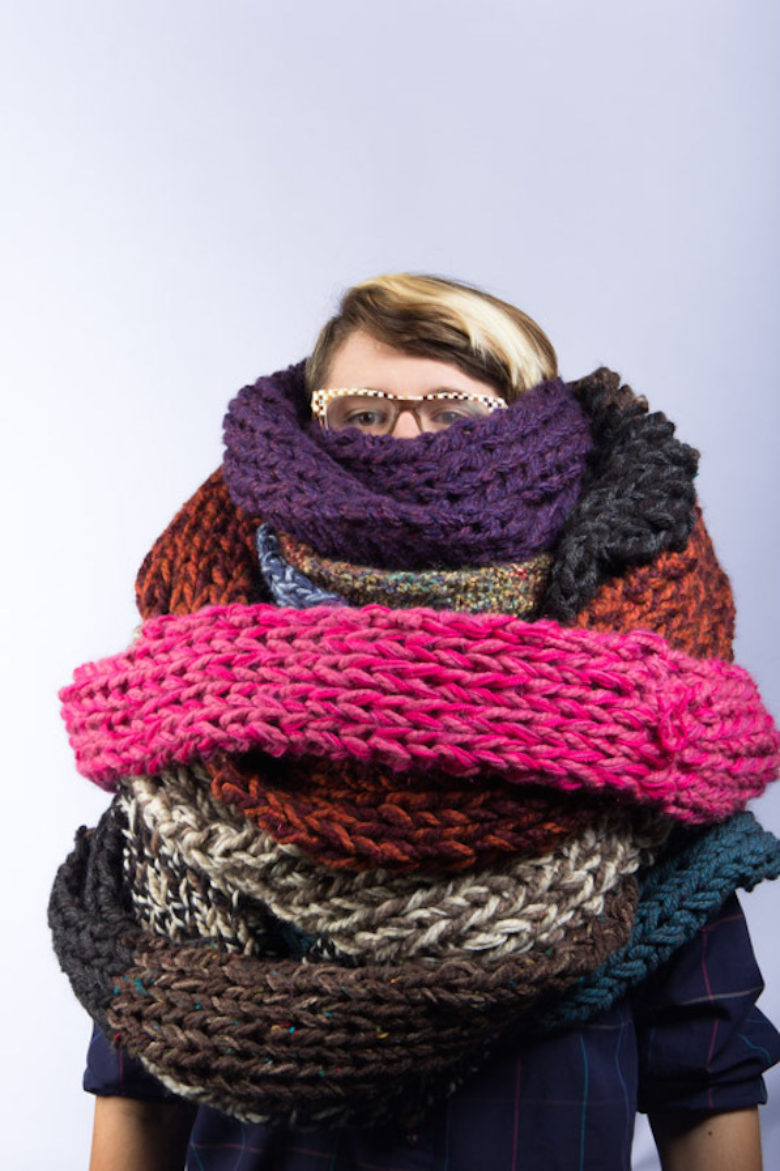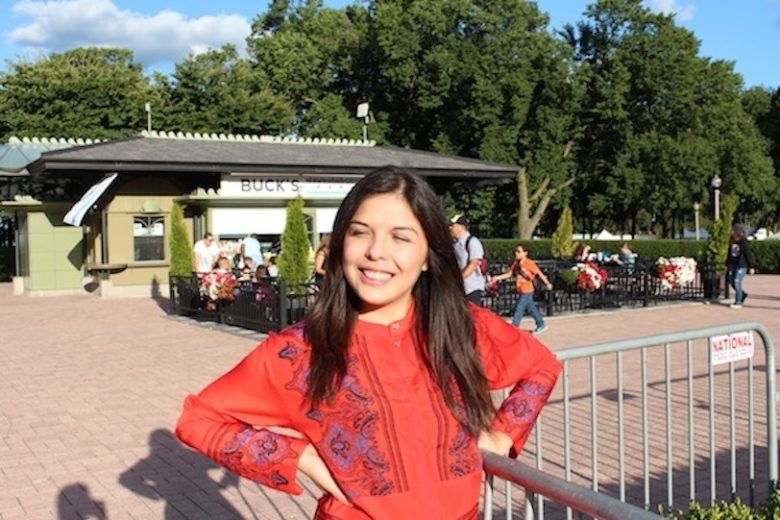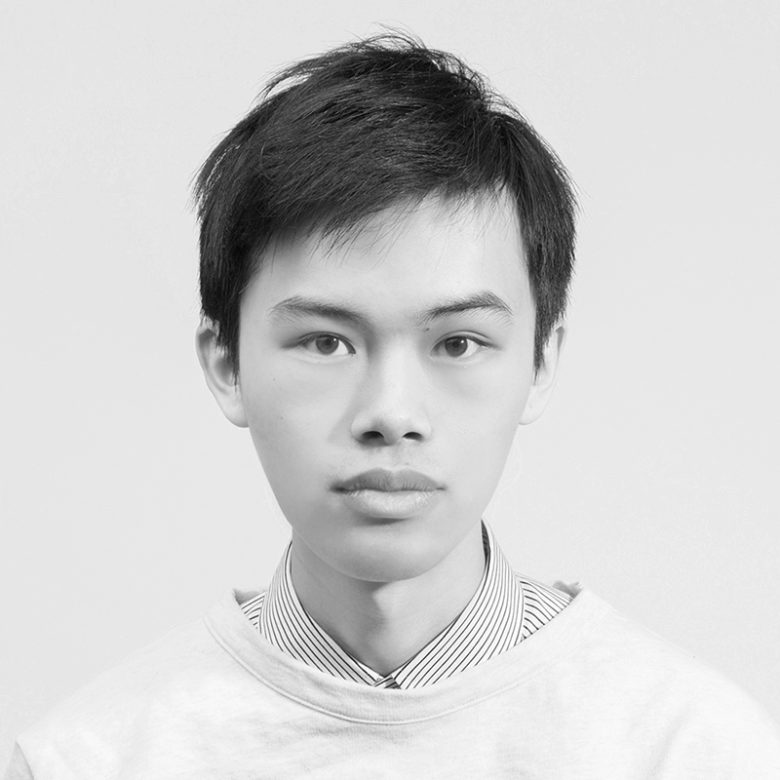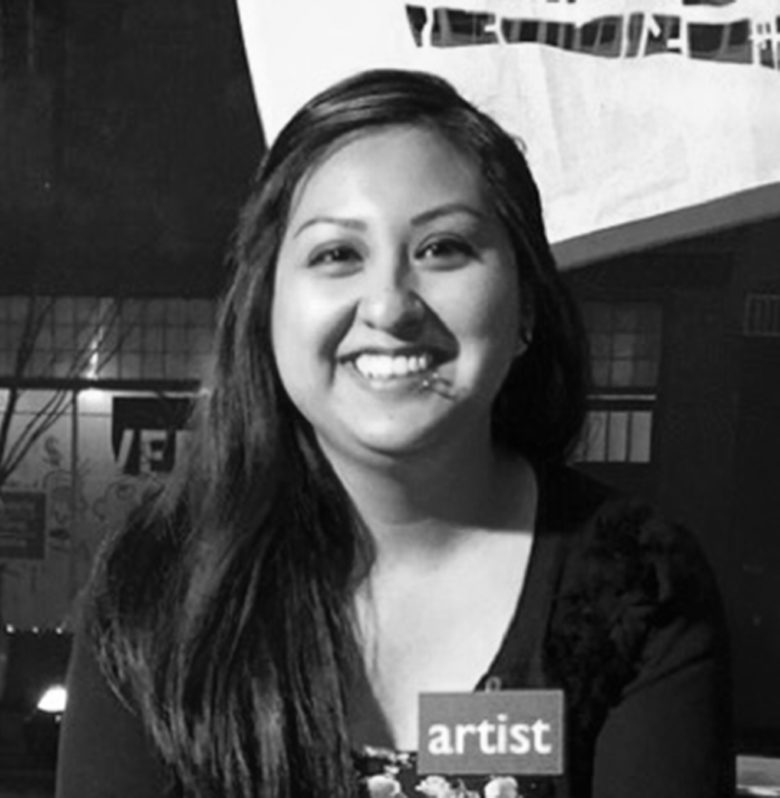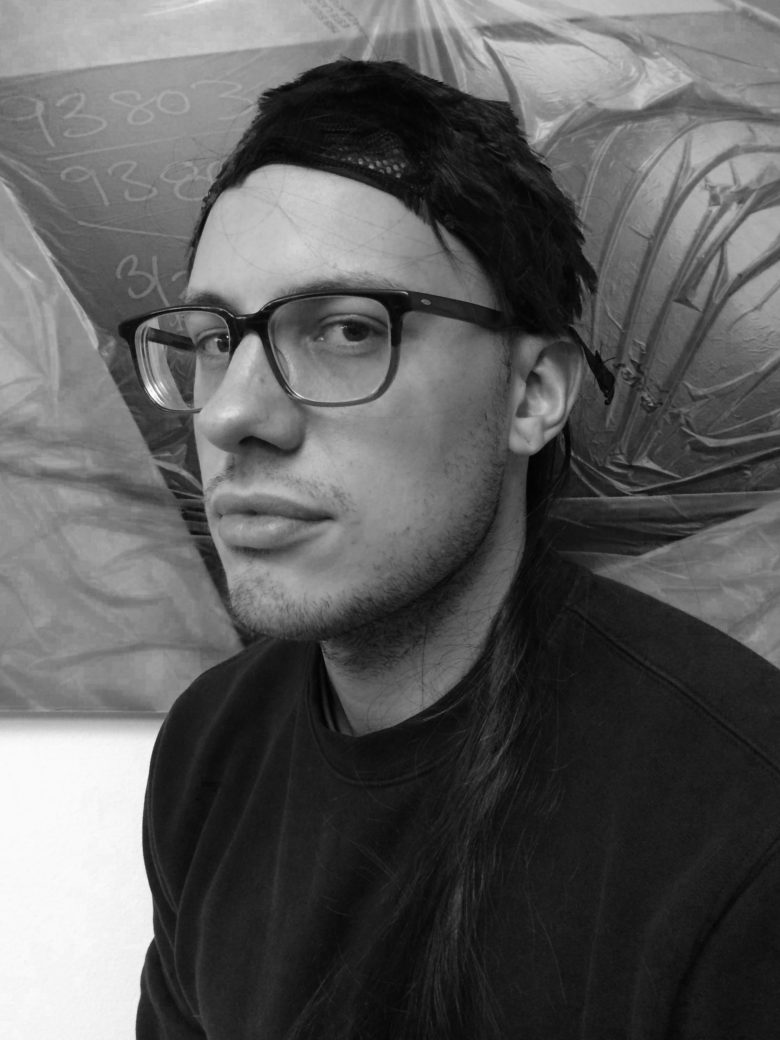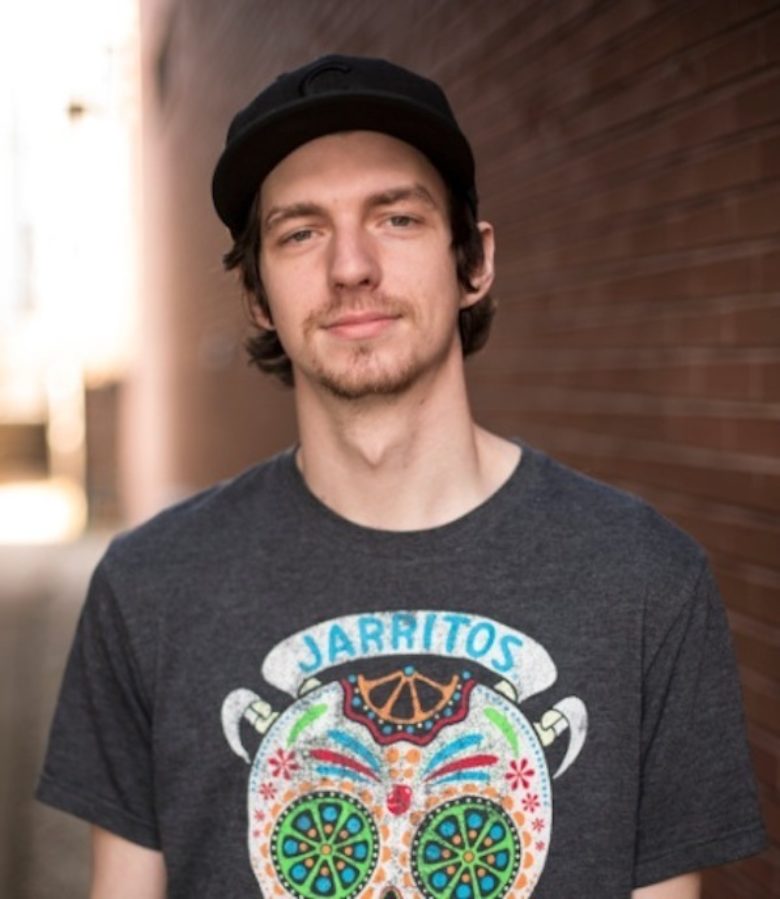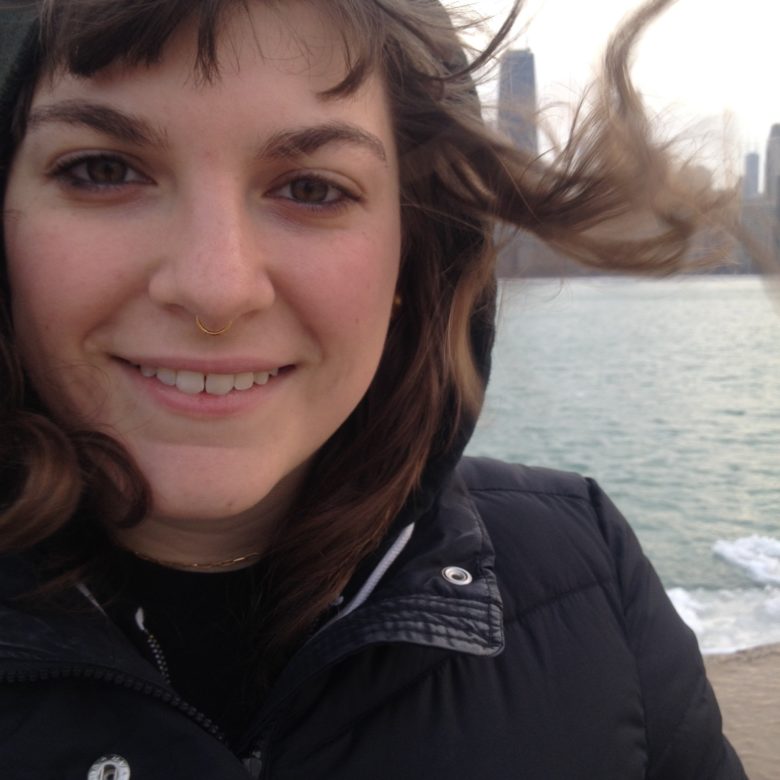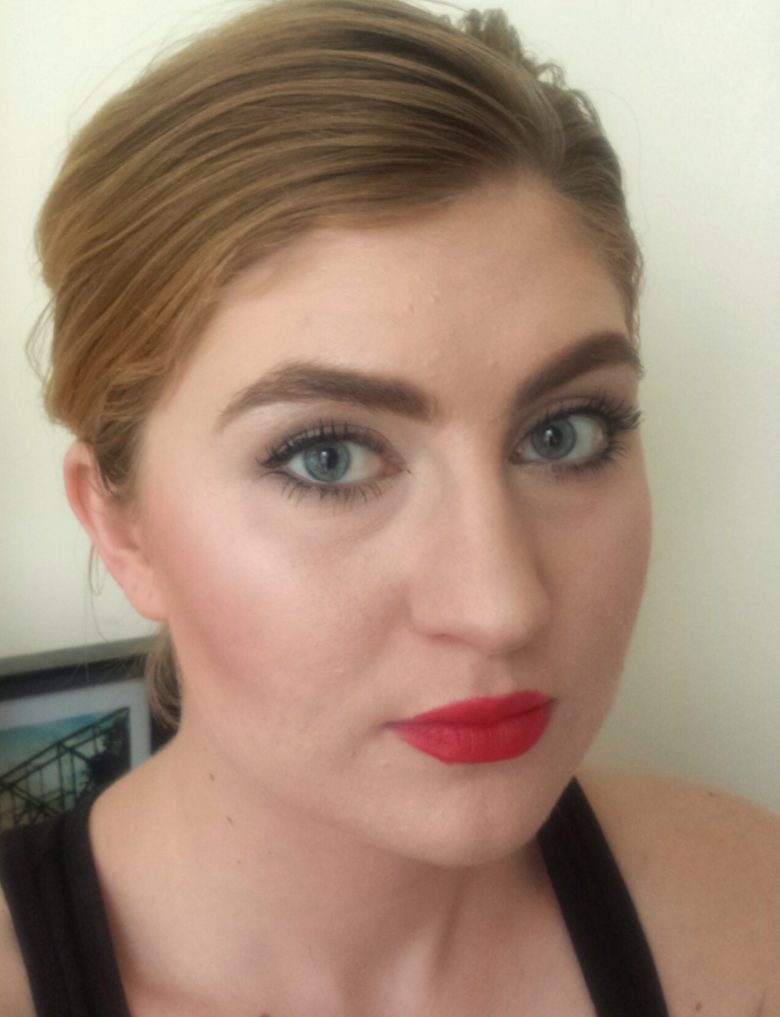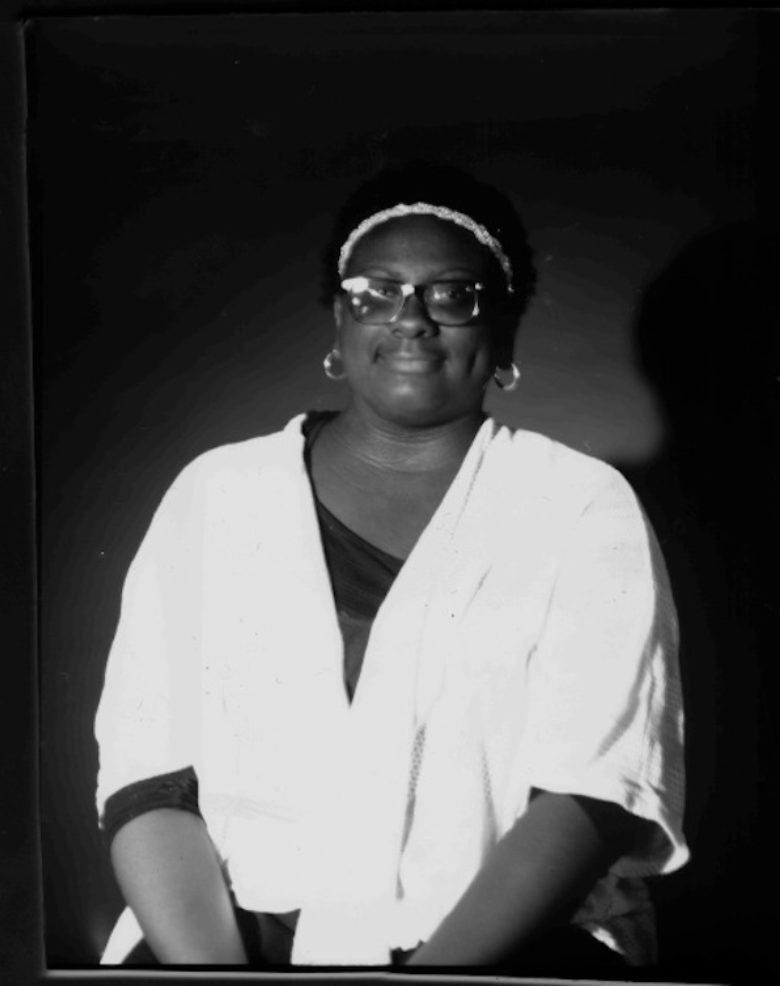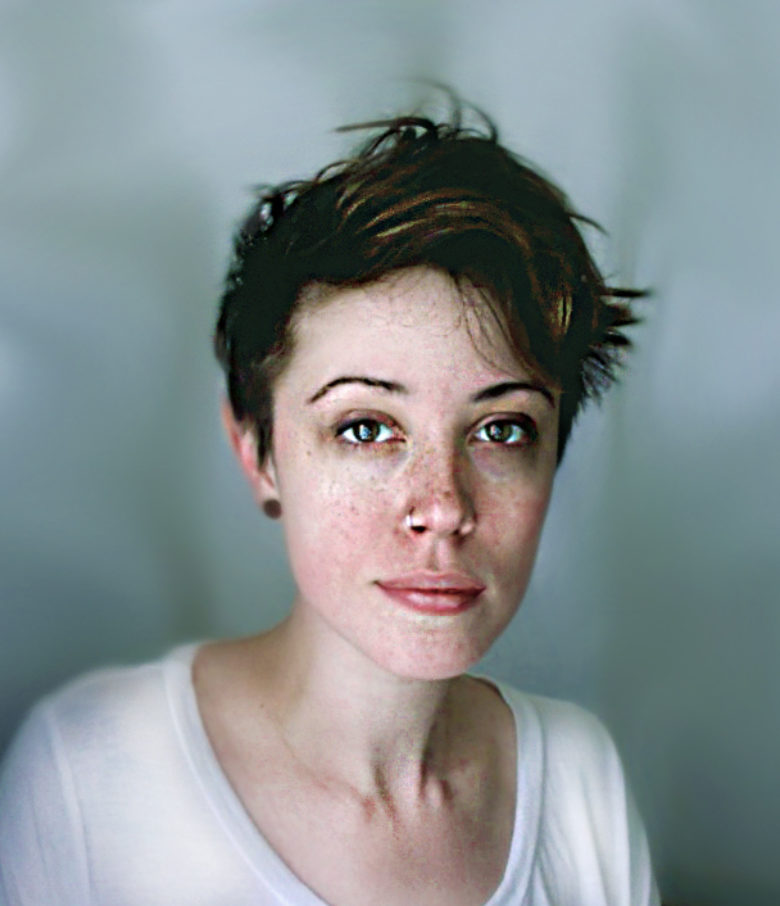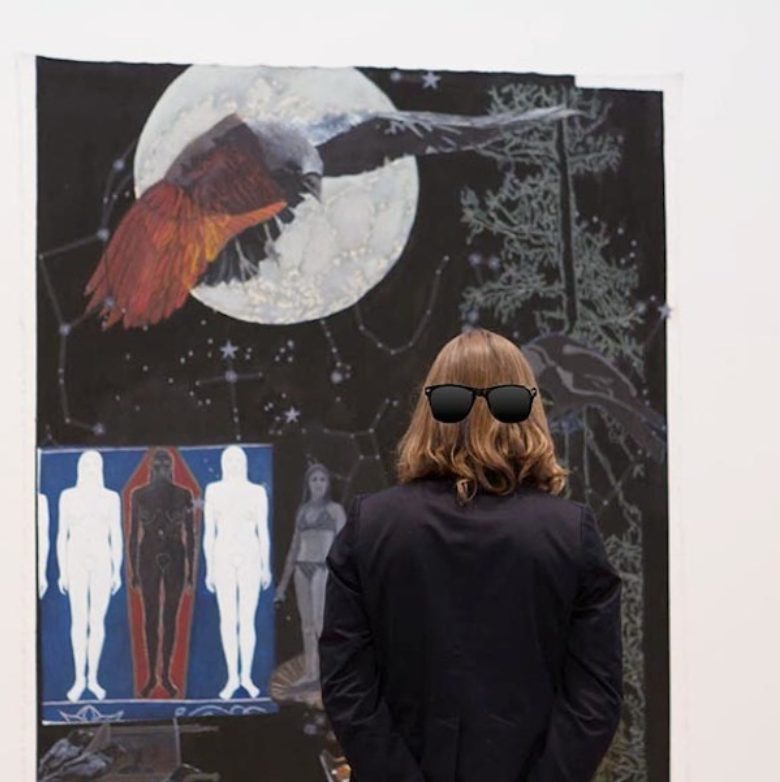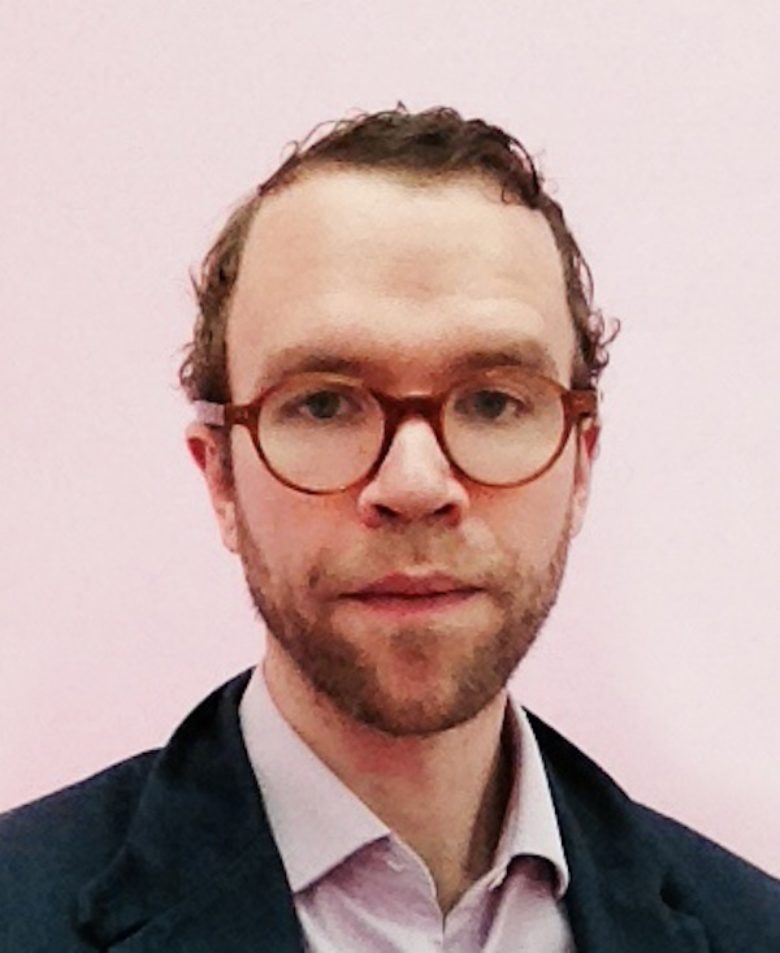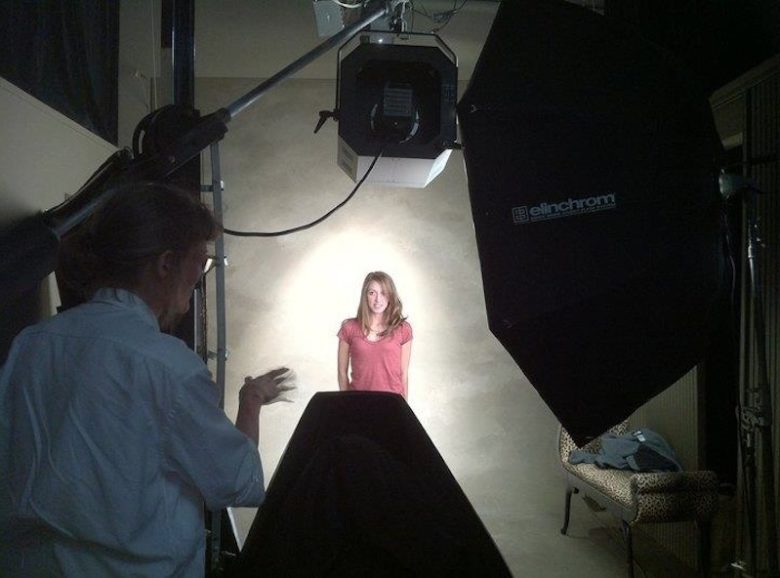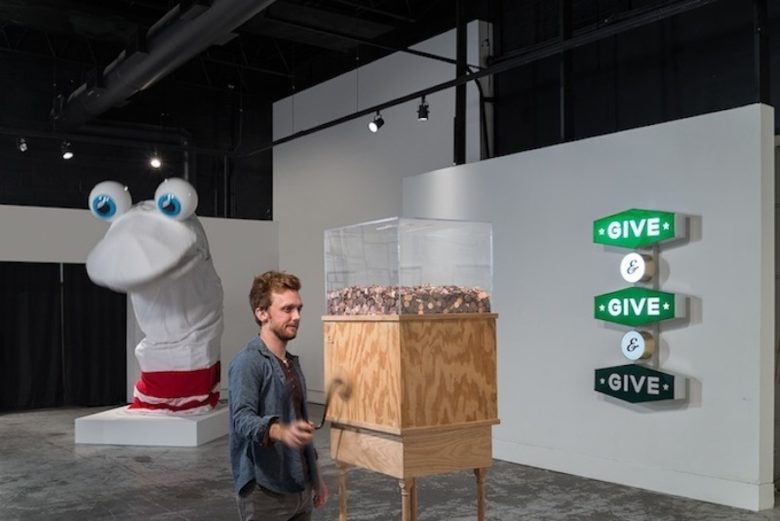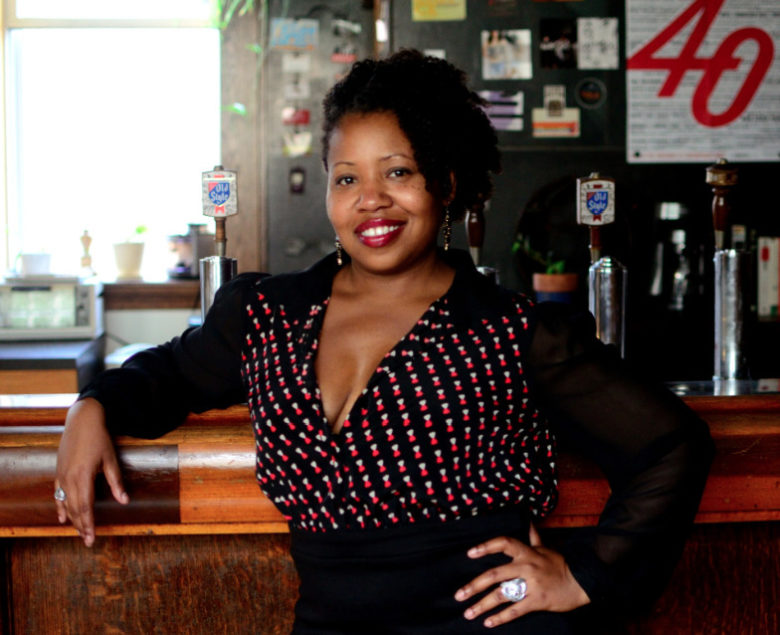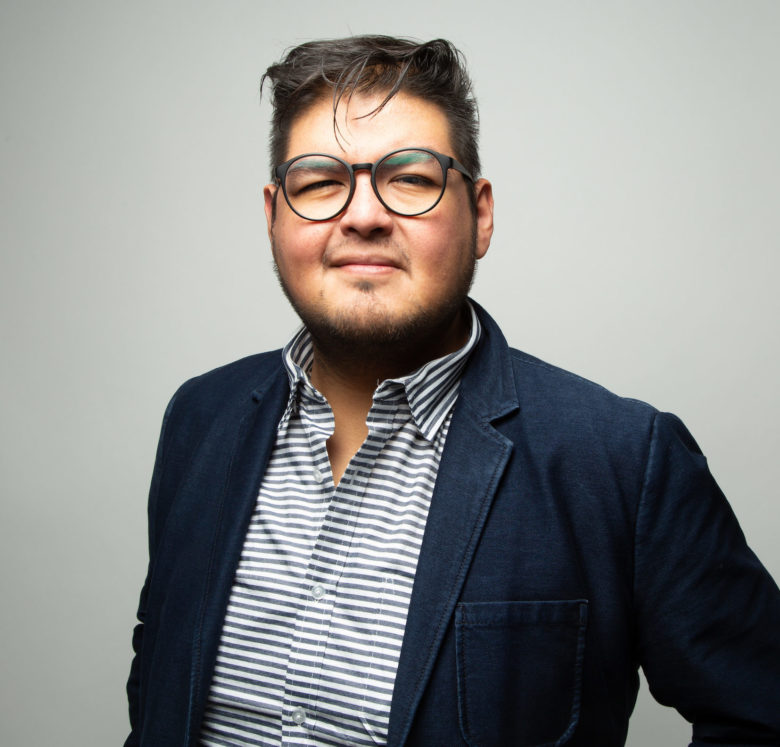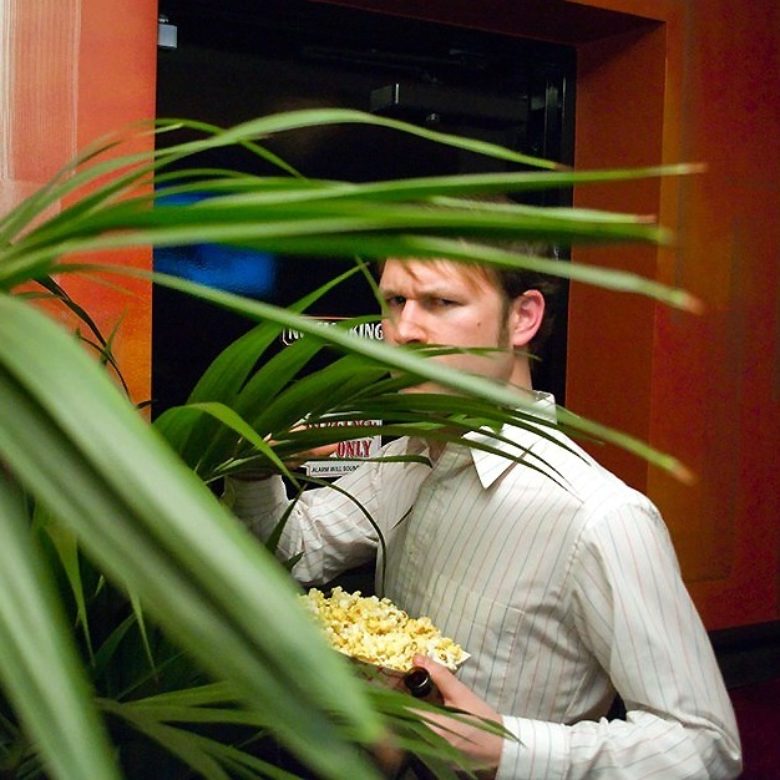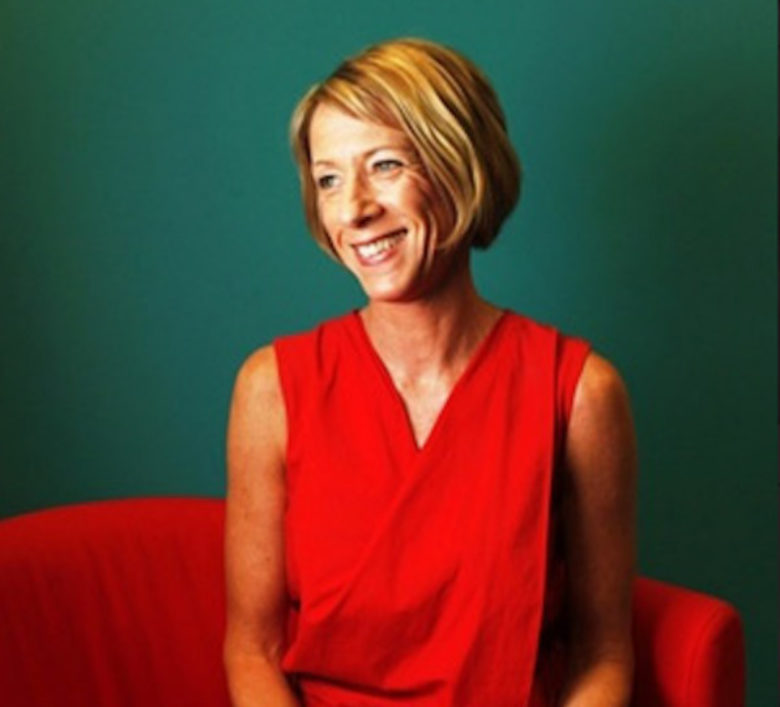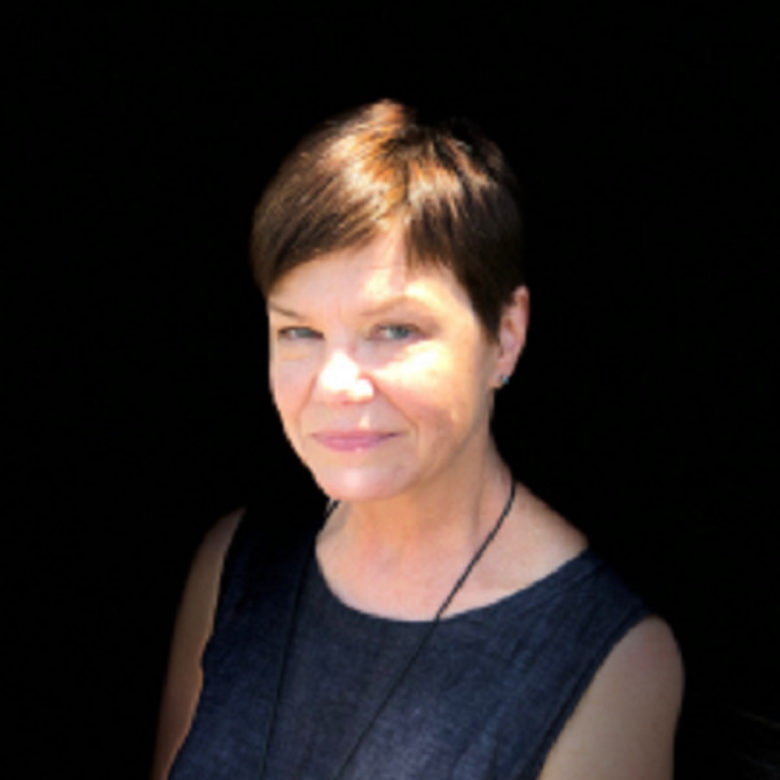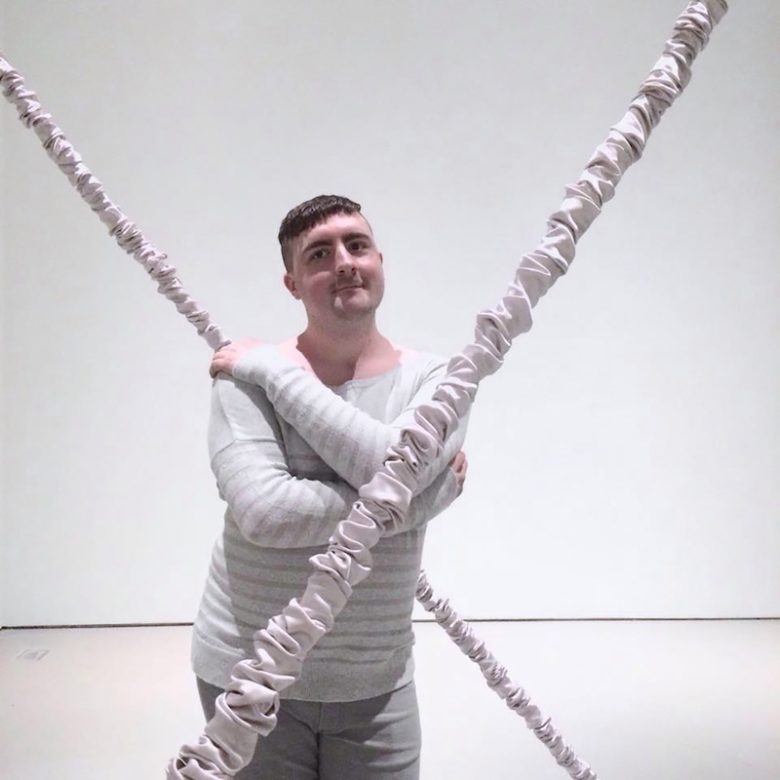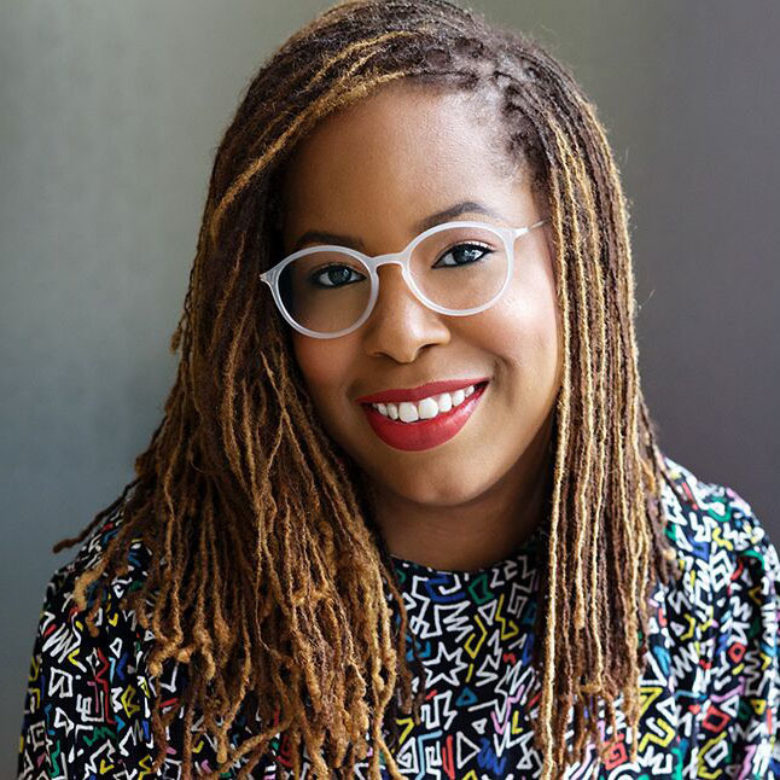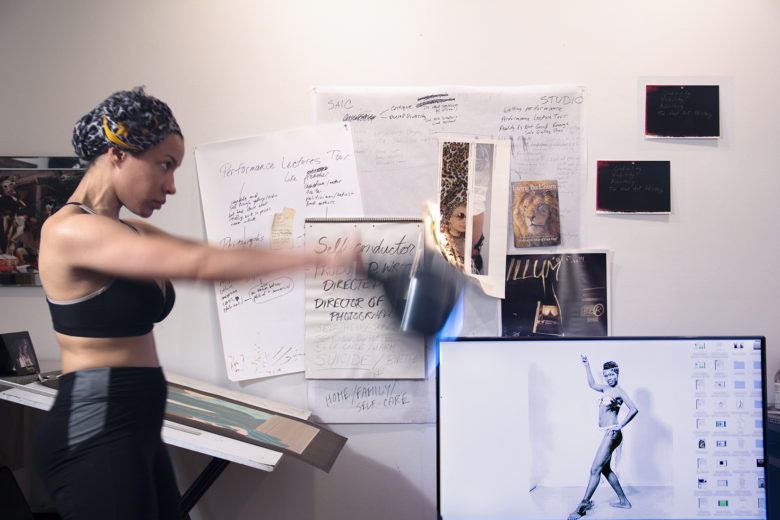Meet Artist Leaders
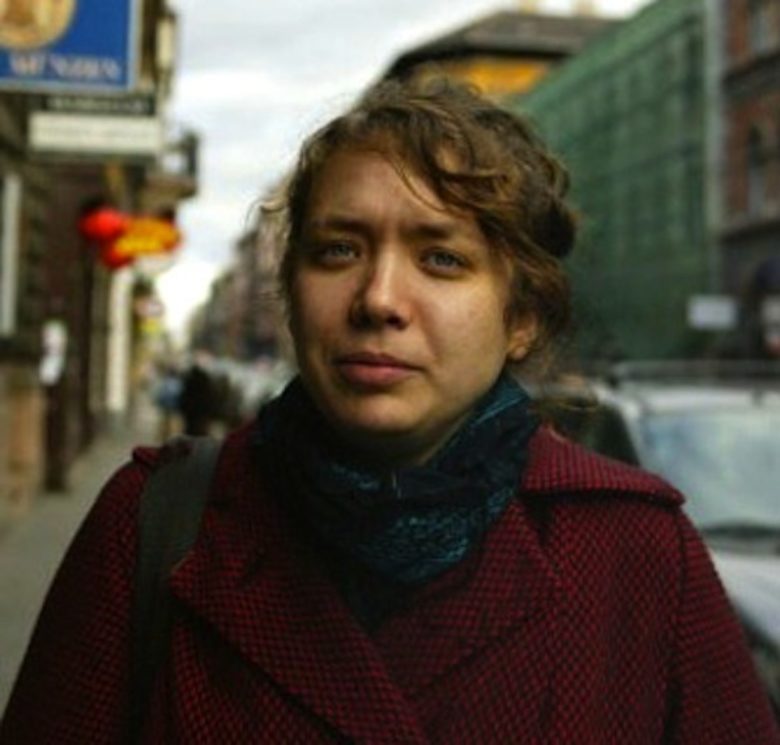
Abigail Satinsky is the Interim Executive and Artistic Director at Threewalls in Chicago, a twelve year old non-profit supporting Chicago artists and the contemporary art community through exhibitions, publications, professional development and public programs. She is the Grant Administrator for the Propeller Fund, which gives grants to public and collaborative projects in Cook County, edits Phonebook (a national directory of artist-run spaces and projects), and is co-founder of Hand in Glove, a national conference on grassroots arts organizing and Common Field, an emerging national organization aimed at building resources and advocacy for small-scale arts organizing. She is a founding member of InCUBATE, an artist research group focusing on art economies and co-initiator of Sunday Soup, an international micro-granting project. She recently finished editing the book Support Networks for the Sullivan Galleries at the School of the Art Institute of Chicago and released by University of Chicago Press in fall 2014 on the history of socially-engaged and artist-run initiatives in Chicago, and teaches courses at School of the Art Institute of Chicago on social and curatorial practice.
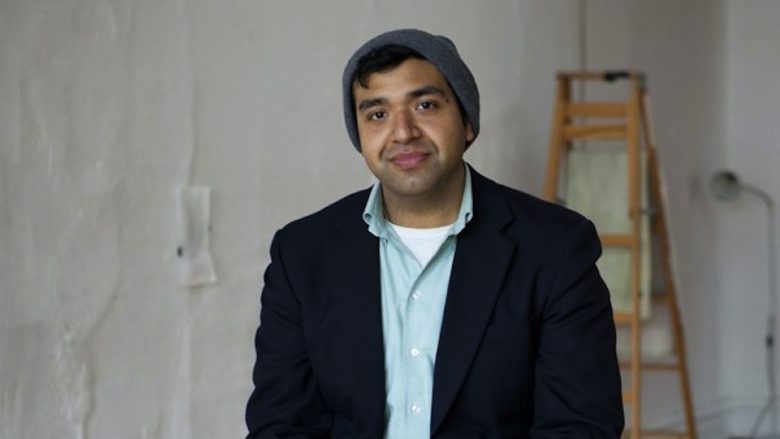
Anthony Romero is a Chicago artist, writer, and curator interested in documenting and supporting artists and communities whose narratives and practices are often excluded from art historical narratives and exhibitions. His projects and performances have been executed nationally most notably at Links Hall (IL), Antioch College (OH), MASS Gallery (TX), and Movement Research at the Judson Church (NY). His writings have appeared in Poetry Quarterly, The Huffington Post, Performa Magazine and the recently published volume on Chicago social practice history, Support Networks (University of Chicago Press). He currently teaches in the departments of Community Practice and Social Engagement at Moore College of Art and Design.
Meet Artist Residents
Nominated by Marwen I am interested in the process of converting our natural environment into sculpture. For each piece, I spend time observing, recording and researching a phenomenon in nature and then attempt to recreate it. I am interested in how the viewer will experience the piece and how that experience might be similar or different from the real experience of being in nature. I am constantly questioning how our culture defines nature and I hope to bring up these same questions through the viewer’s experience of my work. Image: Untitled Weavings, 2015.
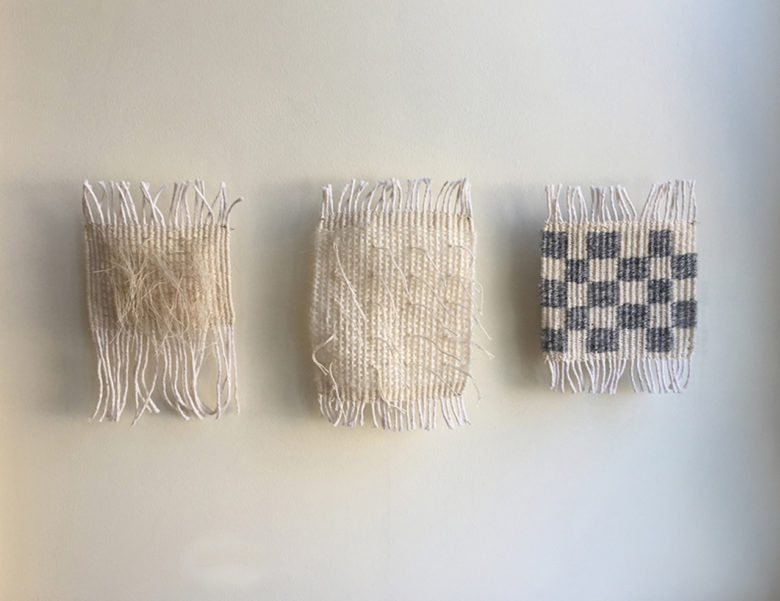
Nominated by UIC The Female: Her intimate / public role, her sexuality, and the origins her selfhood are my obsessions – what I think about all the time. As an artist, I often let what obsesses me guide my process of art making. I work within these themes because as a Latina female, I was taught to be submissive in society, to cover up sexuality, and swallow my opinions. My urgency to unlearn these rules is in an effort make room to see, hear, and experience what it means to be female in this century. My art therefore works to define a new set of rules that liberate the female, empower the female, and defamiliarize the female’s position in the world. I produce drawings and paintings out of thread and oil paint on canvas. These mediums are slow, thus making it possible for an intimate relationship to develop between myself as the maker, and the artwork itself. My art is normally a singular object pictured within an empty space, which is the central idea, that being synonymous with the contemporary female as a central figure inhabiting all space and no space simultaneously with no boundaries to transgress, no discourse to refute. I work with non-tangible yet experiential themes of the female body: the self, the flesh, the mind, and its experience that finds a second body through familiar objects. This representational body functions as a metaphor illustrated in my dreams and attractions. I dream of the ocean and sky as sites where all sense of self is lost, and upon waking up, my art houses myself. I always feel the urge to find significance in life. Image: Y (Handmade Book), 2014.
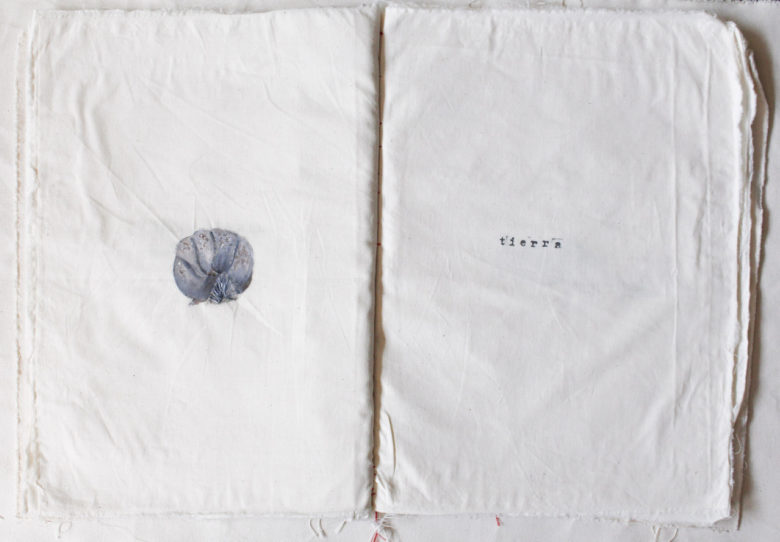
Nominated by SAIC From the tropical plants trembling outside the brick wall in Xujiahui Park in Shanghai, to the poinsettia growing under an escalator in Union Station in Chicago, I explore places with doubts. My desire to do so is informed by a constant transition between China and the United States, naivete and disguise; while still feeling ambivalent about both lands. Negotiating my struggle with attachment, my photographs chronicle my psychological undercurrent in both lands. I am surprised how this journey to the United States has challenged and accelerated my growth. Through photographing strangers I encountered and unfamiliar places, the image of my family and childhood memories in my mind started to shift in appearance and temperature, I started to understand romance and intimacy. As I continue curious exploring, I am waiting for the story to unfold. Image: Untitled (Shadow)
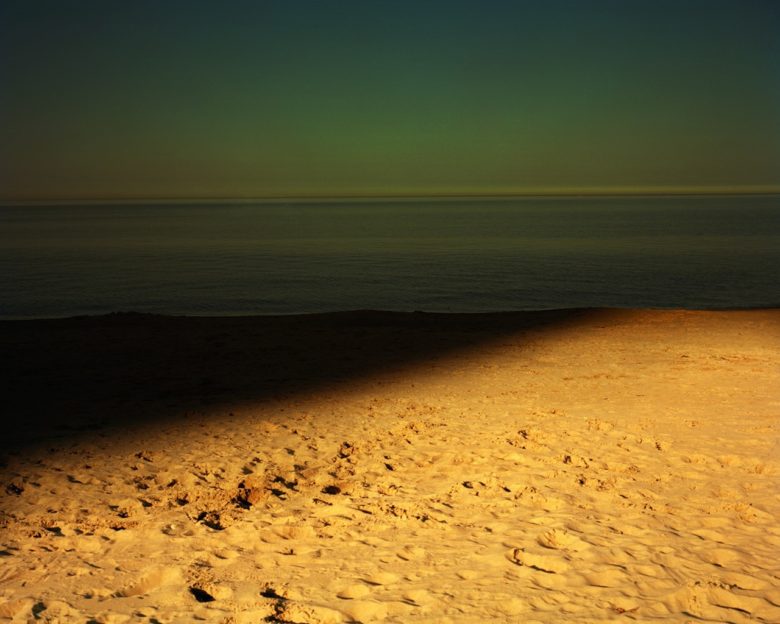
Nominated by Marwen My work focuses on cultural images as a first generation Mexican American young woman and the connections and disconnections between the lifestyle of my immigrant parents and the one I have built for myself. My cultural roots and traditions inspire me. Image: Loteria, 2015.
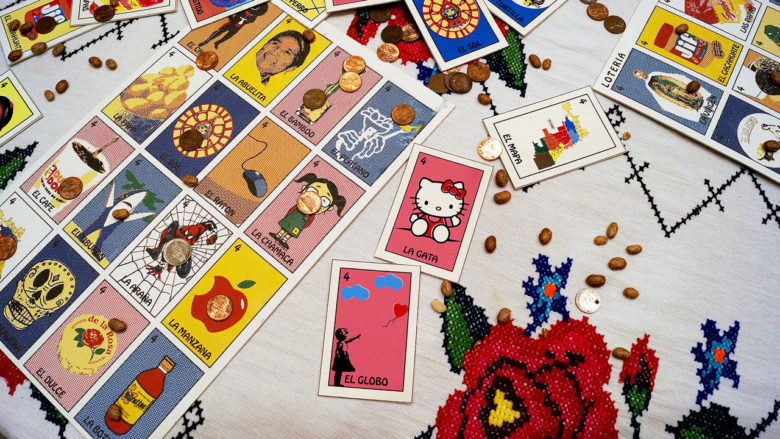
Nominated by UIC I take great interest in human psychology regarding obsessive and compulsory actions. This interest stems in part from my career as a sleep technologist conducting research on nocturnal human behavior. My experiences have given me insight into how we connect with both objects and others in a physical and psychological manner. I am fascinated by the way our relationships with secondary bodies become distorted perversions of their sources. I often find myself drawn to the deceptive nature of perception, in particular, the moments when perception latches itself to traumatic albeit pleasurable experiences. I create objects and images that depict my fascination with the plasticity of reality. These works allude to gruesome acts, death, or pleasure that reflect on the mutability of the senses in both body and mind. The image-based components in my work present a dismantling of 3-dimensional form to enhance or dispel their illusion of a singular truth. In treating images as avatars of the original objects, they depict a propositional space. The intimacy of objects interacting with images is abstract and elastic, revealing closer truths about our vulnerabilities and obsessive tendencies. I juxtapose materials that emphasize softness and/or rigidity to embody the organic and fragmentary fuzzy nature of memory. Scale is a way to distill a particular obsession or fetish into its purest form in relation to the human body. Through the repetition of surfaces and gestures I present a merging of two realities with the alchemic mechanisms of sculptural form and image space. Image: Slippery Mess, 2014.
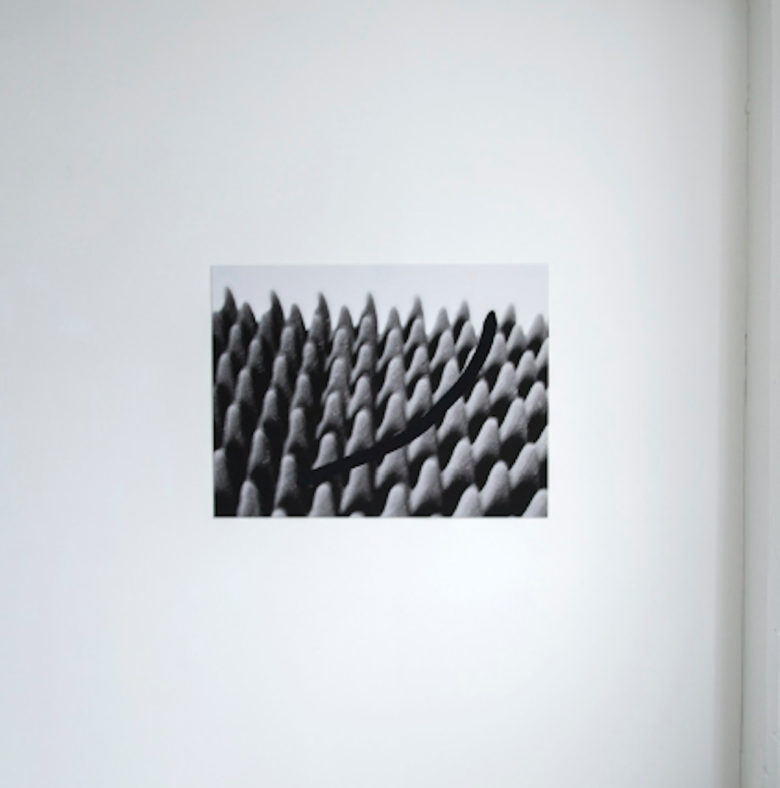
Nominated by Columbia College My past experiences, my daily encounters, my future endeavors; They all culminate into something that rarely becomes prevalent in the same way. It’s hard to explain. The answer is never straight-forward, the feeling is always unclear. It’s something bigger than the self, something more complex than words. In my work, I want to create a spatial plane that detaches me from the world. One that lets me sink in deeper and deeper the longer I look at it. Not something that is visually overwhelming with color and texture, but rather something that is inviting, soothing, and oddly familiar to anyone that lets them self in. I see these paintings as portals, both mentally and visually. These works are both spiritually engaging in the process of creation, allowing for reflection and contemplation, as well infinite in their possible forms. Every one starts with the center, and ends with the center. With hard edges and geometric forms juxtaposed against natural textures and patterns, my work prods at the tangents between geometry and nature. With a focus on symmetry, each piece contains a sort of self-similarity akin to fractals found in nature; such as the branches of a tree, the strike of lightning, or the ever-turning spiral of a galaxy. The use of large formats, line, pattern, texture, and a spiraling symmetry help me create a window-like portal to another world contained in a two dimensional surface. Image: Lands End, 2014.


darien R Wendell (ey, d) is a transdisciplinary domestic artist working in fabrics, food, crafts, and other home-building art forms. A Black shapeshifter and creative - ey navigates the intersections of cultural organizing, reproductive justice, and Black trans/queer struggles to thrive. d labors to make refuge, repair, rest, and release possible for Black people between and beyond our ever-present moments of suffering. The work is situated in a queer lens and politic to honor the vastness of our need and care. From this space, d honors erotic power and sexuality as essential tools in forging ways of living outside of, or fugitive to, systems of oppression - in particular white supremacy, ableism, fatphobia, transphobia, and captalism. The works can be read as experiments in sensuality, inspired by Harriet Jacobs’ “loophole of retreat”.
d’s practice has taken the form of immersive installation, participatory workshops, archive-building, performance, events curation, and care work thru ancestral healing modalities. You can find darien in community as a member with For the People’s Artist Collective, as a farming fellow with Fresher Together, and stewarding youth sexuality education with Illinois Caucus for Adolescent Health.
Image: darien R Wendell, In My Mouth 2, 2020, Mud, pressed flowers, linocut stamps, and ink on canvas.
Image description: The second in the series of experimentations with pressed flowers and mud stenciling. The background is a linocut stamp of one mouth spitting into another. The mud stencil overlaps the stamp in a diagonal across the canvas. On top of the mud are the pressed flowers - Queen Anne’s Lace and pansies. The pansies are both a torn, color faded pressing of an actual flower and a linocut stamp in teal.

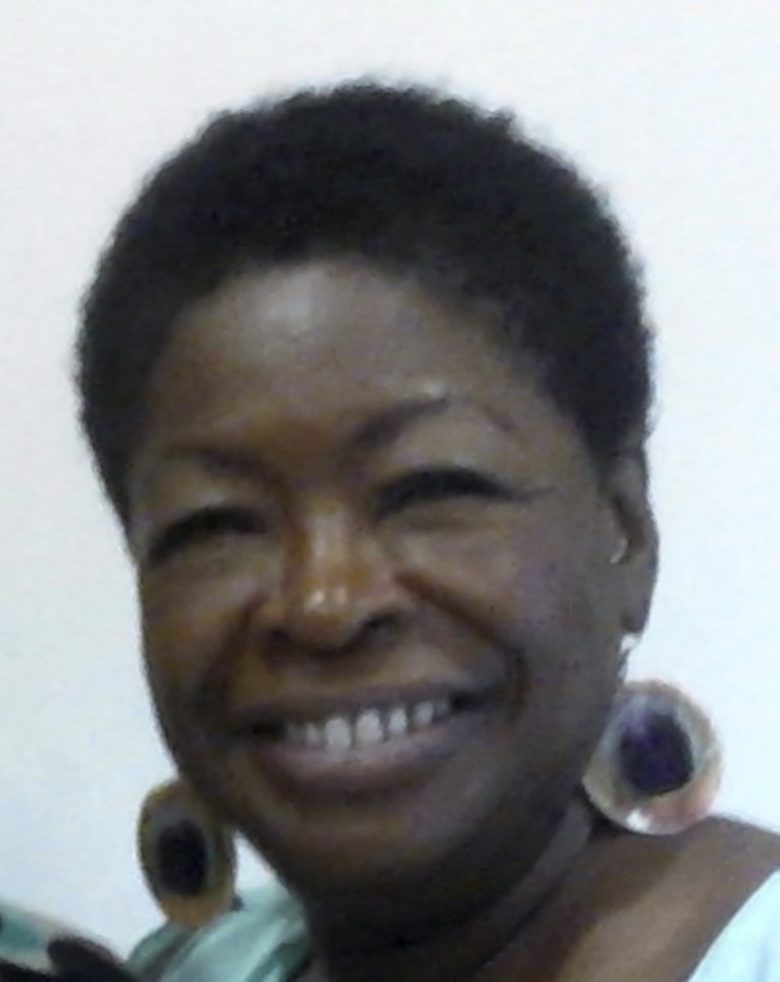
Nominated by Chicago State University It is important to record the mundane occurrences of everyday life for future consideration. Artist and historian Margaret Burroughs said the “purpose of art is to record the time.” That is theme of my work. All beings are interested in how others live. Activities that some take for granted, are fascinating to others. There is so much to learn from each other’s cultural similarities and differences. I aim to share candid glimpses into lifestyles in my immediate environment. The recording of these observations, document what will soon become a history of the occurrence. I am inspired by my studies of the works of the “Old Masters” during the Renaissance period. When I traveled abroad, the genre works at the Louvre in Paris, France, were the most engaging. The stories the art work tell with time stamped settings, enable us to be transported back into time. We are given better understanding of history, which evokes an emotional connection to the past because of art. Life consists of fleeting overlooked moments that are seemingly unimportant now. Our now, will matter later. My works provides an opportunity to share an empathetic views of life today, and it will influence the future in some way. Image: Color Pencil Drawing of a Door Outside Another Door.
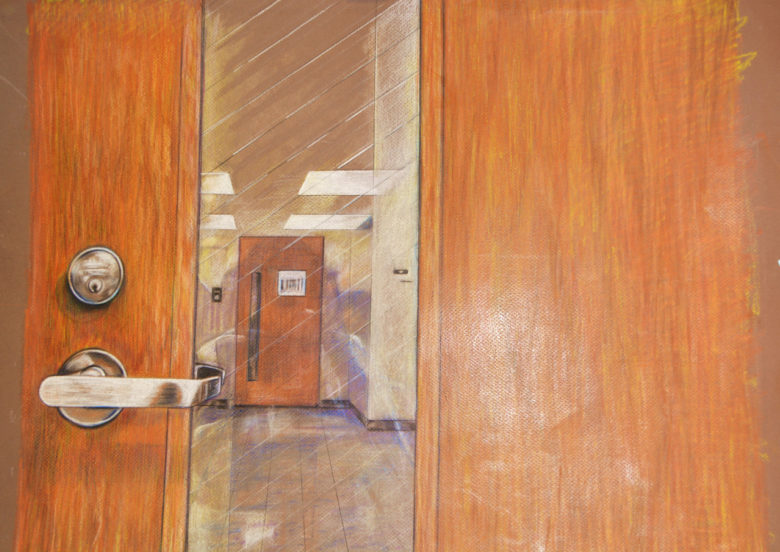

Nominated by Northwestern University My work aims to be widely accessible. The fine arts have long been an exclusive privilege of the elite. My work aims to break these socio-economic prejudices and return art to its purpose (if such exists) to dialog with the rest of humanity in a reflective pondering of life. To this aim, I take two approaches. My first approach is to emulate and exaggerate a few of the elements that unite the human race—namely, time, space, and biology. Much of my work toys with the mundane simplicity and simultaneous philosophical complexity of time. Using a variety of media with current technological advances, I endeavor to both comprehend and apprehend the defined physicality of our bodies in relation to the ambiguous, infinite space to be occupied by our thoughts. Biology is another unifying component of the human experience. Exploiting the physiological limitations of our eyes and our brain’s occipital lobe, I try to create work to which the effect is the same for everyone, an equalizing universality.My second approach is to make work that questions the definition of art. Related investigations would be into the validity and exclusivity of the art world and its boundaries in light of recent works of conceptual art. Why is work still considered visual art if to understand its motivating concept, and thus the piece itself, requires reading a thousand-word wall label? In challenging the institution of art, or the artworld, I aim to broaden its boundaries. To accomplish aforementioned goals, I employ whatever media reaches the broadest population or most pointedly communicates the work’s idea. Image: Marks Accumulated Over Time, 2014.
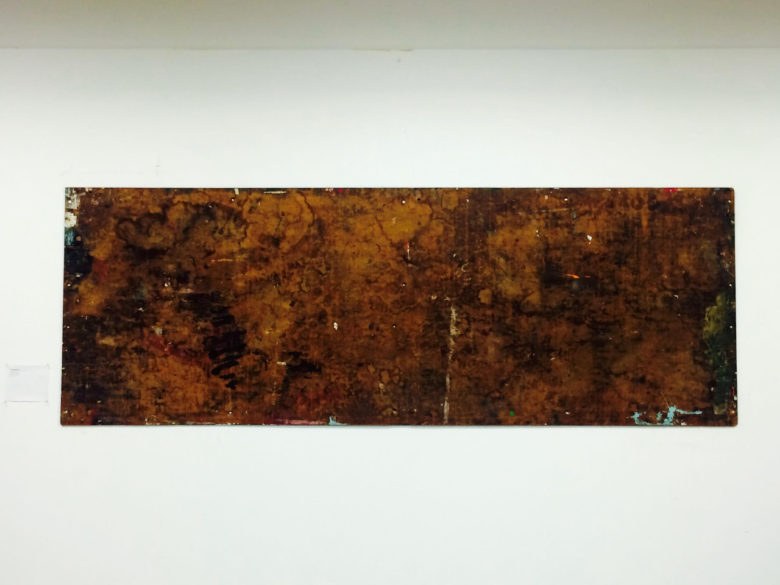
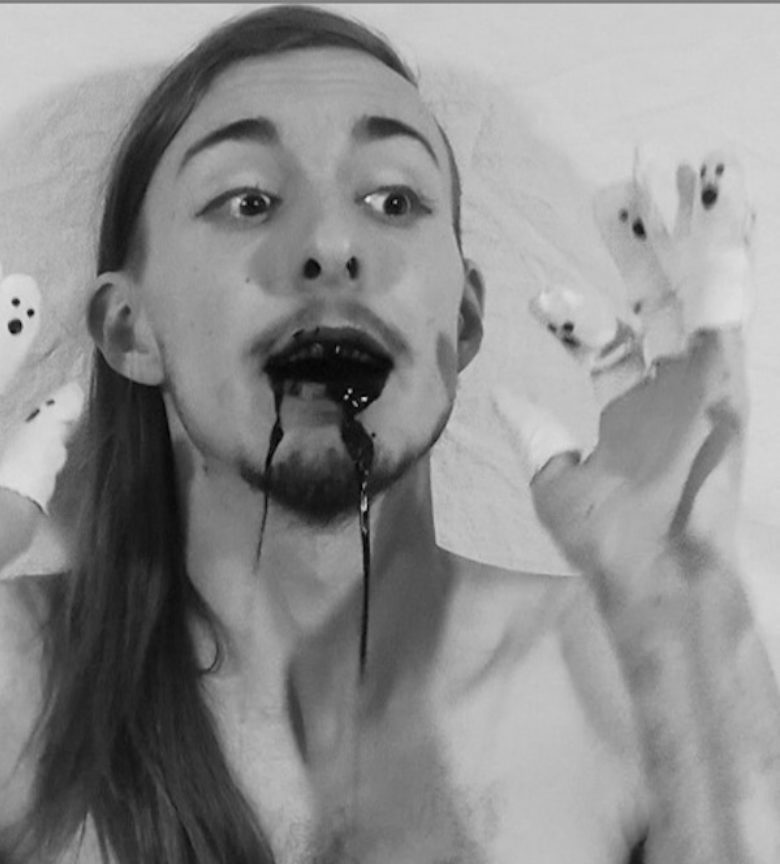
Nominated by Northern Illinois University I create objects because I want them to inform me. My work supervises the fragile relationship between boredom and distress. I deal with insecurities, fears of death, and the threat of lingering vacancies by focusing these menaces into a collection of psychological props. When an object refuses to reassure or narrate my subjectivity, I reject it, finding relief only with the conception of a new one. Once I create something, I demand that it talks to me. A successful prop will tell me who I am. I interrogate the object until I absorb its perspective, then I can take my new attitude and apply it to the next piece I create. My work is about manufacturing objects that feel estranged from the materials and products that they are representing. I contaminate an object with the quality of others as a means to defeat expected function, denying the object of its practical obligations and co-opting it into an inanimate family of black sheep. Image: Foaxm (Self Portrait as Counterfeit), 2014.
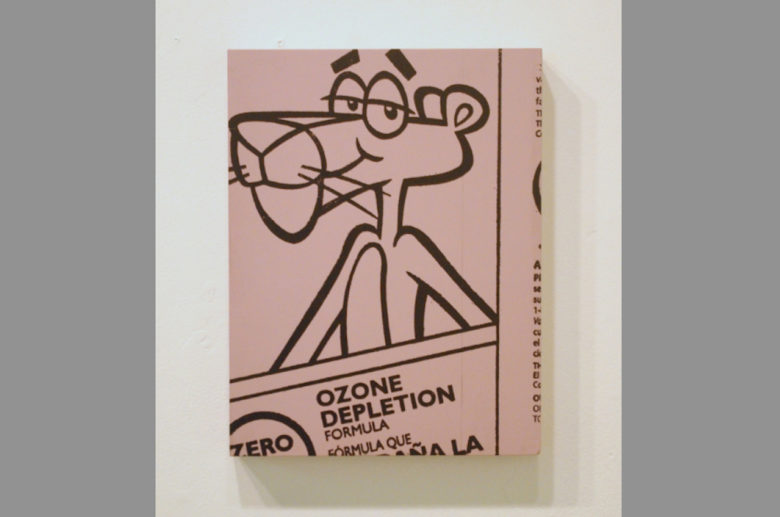
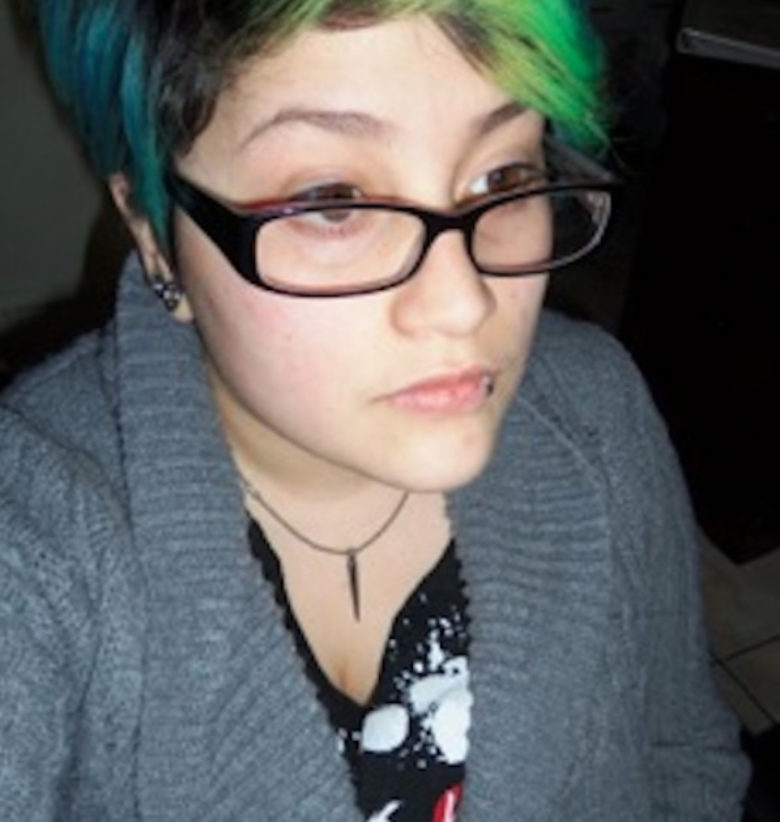
Nominated by Harold Washington College Art is an expression. Some use it to express their opinions on certain matters, and others use it for themselves. In the work I create the focus is on randomness. The combination of everyday objects, people, thoughts, and animals along with a dash of comedy is what inspires me to create art pieces. My pieces are made for the viewers’ enjoyment. My work is successful when the viewer has a positive outtake from them. Image: 100% Chihuahua.

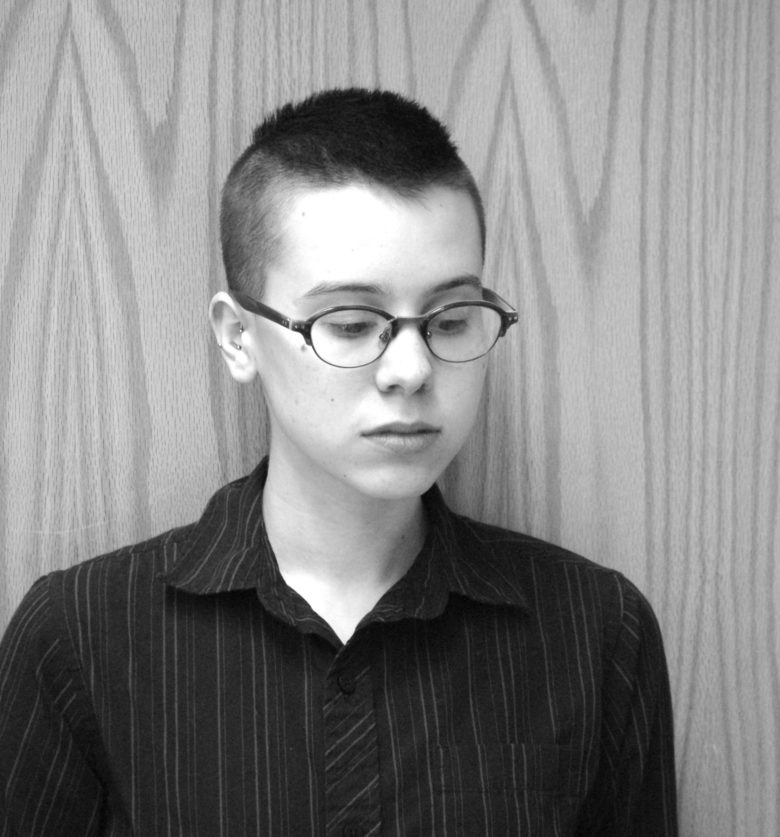
Nominated by Northern Illinois University My paintings serve as exorcisms. The theories, conditions, and ideals that sit dogmatically in my head expel themselves through a meticulously rendered visual. Intersectional feminism, evolutionary biology, art history and queer theory all influence my approach to the world, allowing the residue of these perspectives to be seen in the work I create. My imagery forms sterile grids that forcefully isolate and examine the associations linking objects and ideas. Each painting is a curated plane, a gestalt archive. For art with feminist intentions, inclusivity is vital. A representational approach is critical to my work, because it is legible to a wider audience and helps to deconstruct the exclusivity of art while carrying on a critical, theoretical conversation. Processing personal fears, societal critiques, and structural curiosities through paint, my work disperses the burden of these collective forces. Through the use of traditionally feminine imagery and historically masculine execution, the androgynous end product becomes a little shrine celebrating the disruption of accepted notions and the exposure of a clandestine machination. Image: Venus Study, 2014.

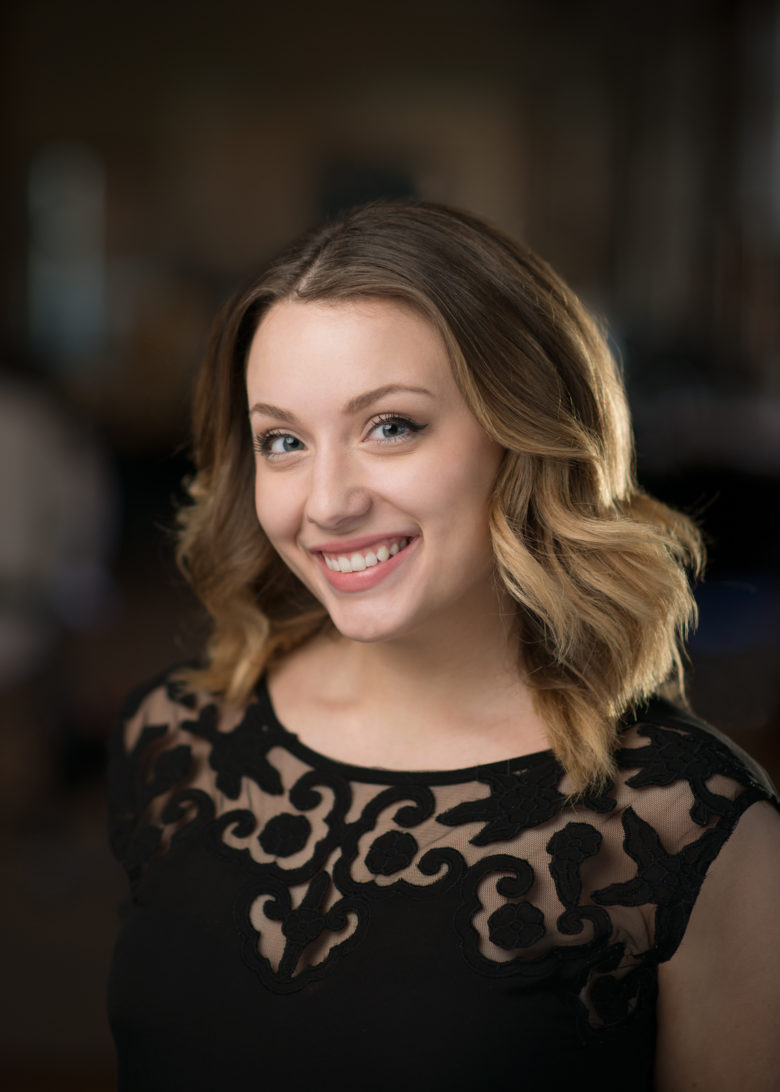
Nominated by Columbia College As an artist of multiple mediums, I am constantly balancing my different loves with one another. The dancer in me manifests itself in my body as well as through the camera lens. I see it at play while directing subjects to angle towards the camera and as I am able to clearly visualize poses. The choreographer directs my video editing and pacing, and I see each clip as another 8-count taking part in the rhythm of the piece. The photographer creates images as well as video compositions, and plays a large role in composing my design aesthetic. The designer in me is apparent in all aspects of my work; a sense of fresh classiness with a sprinkle of dark quirkiness often drives my art. Image: Untitled, 2012.
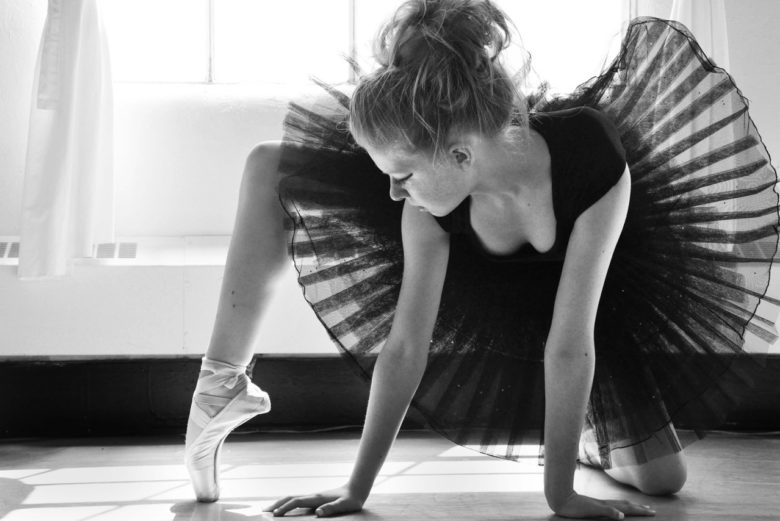
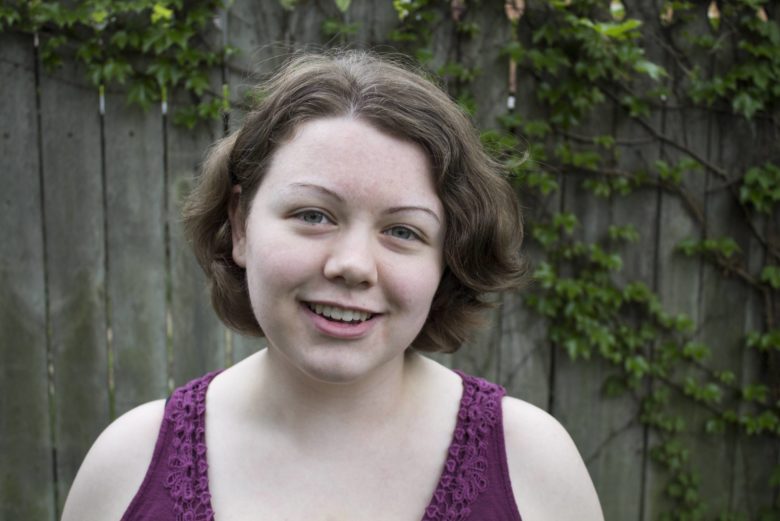
Nominated by Marwen Lee Kintner is a Chicago based artist whose work ranges in a variety of mediums. Her preferred focuses are drawing, painting, darkroom or digital photography, and letterpress printing. She combines traditional drawing with digital design to bring a contemporary aesthetic to established artistic methods. Lee is currently a student at Columbia College Chicago pursuing a BFA in Graphic Design. Her interests lie in book and publication design; she hopes to pursue a career as a designer or illustrator while creating exhibition pieces in her free time. Image: Irish to the Core, 2014.
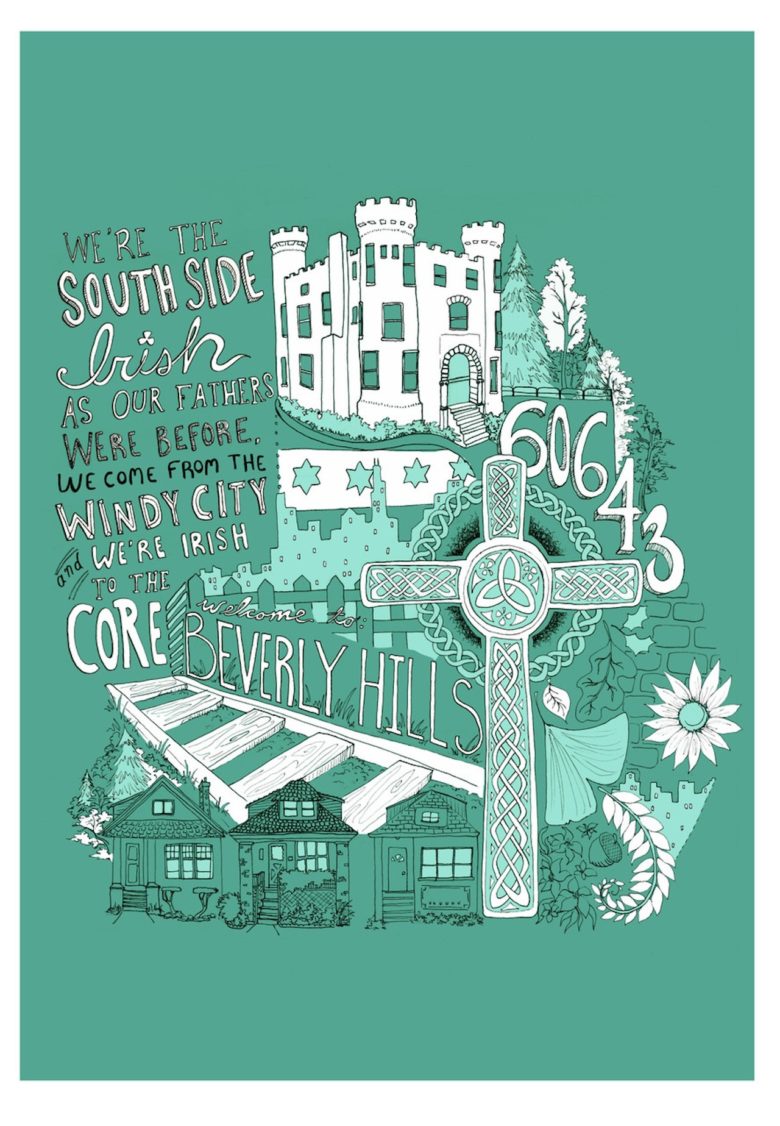
Nominated by Columbia College Lucas Ballester’s work triangulates a conversation among the formal, the object, and the body. His experimental process seeks to expose the linear nature of relationships via object surrogate, and to compose them so that the sentiments they carry take on a physicality that relates to the body. Image: Self & Other, 2012.
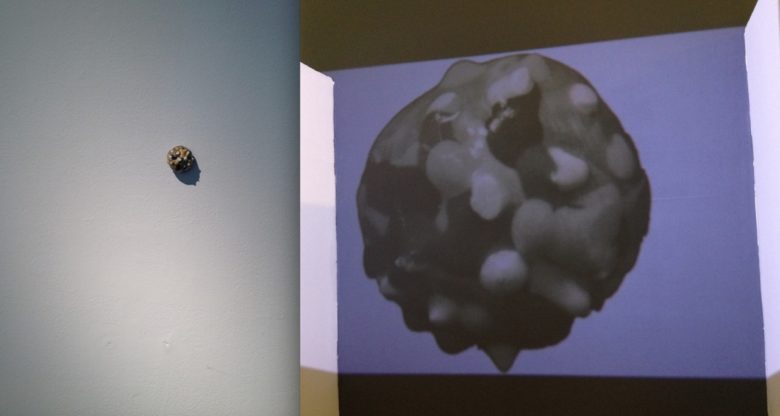
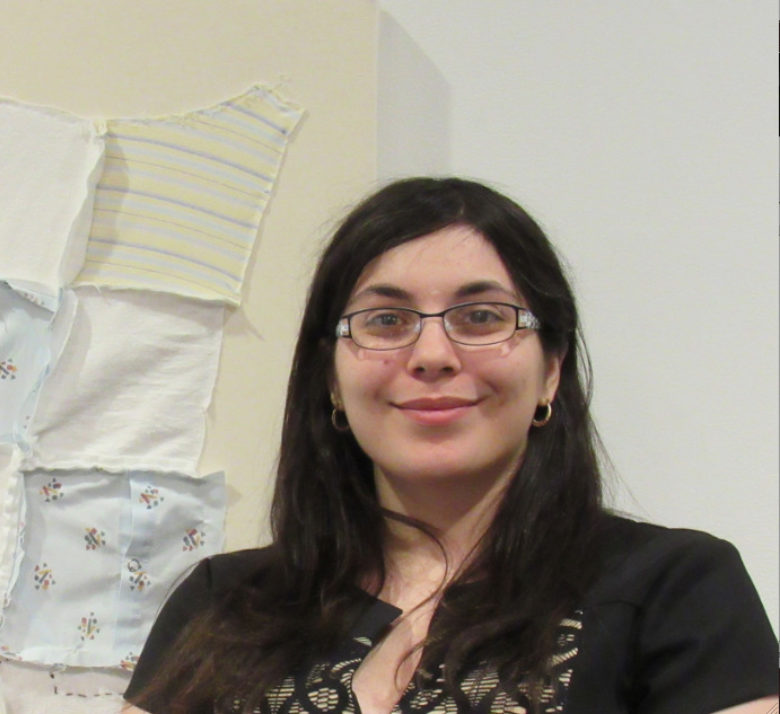
Nominated by Northern Illinois University As a child, my inability to speak had me placed into a special preschool in order to stop speaking gibberish. While my ability to speak has improved, I don’t think I ever mastered the process of taking what is in my head and moving it to my mouth to speak. My work brings personal experiences, thoughts, and memories from my mental space into physical space to share with others. My current body of work was created while I was taking care of my grandmother, who was diagnosed with Stage 4 uterine cancer. It was a way for me to digest and accept her eventual passing. Image: Thirty Miles, 2014.
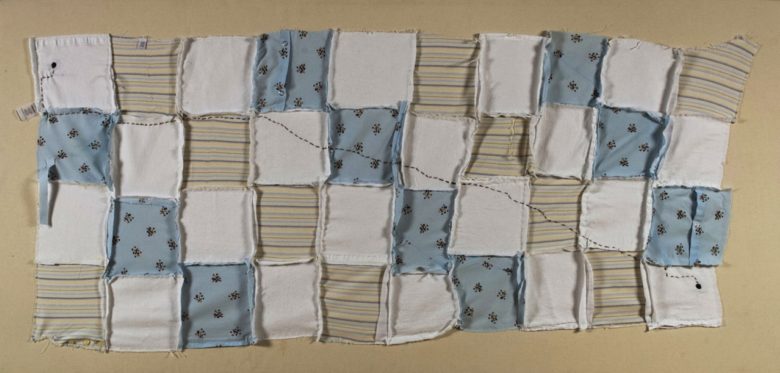
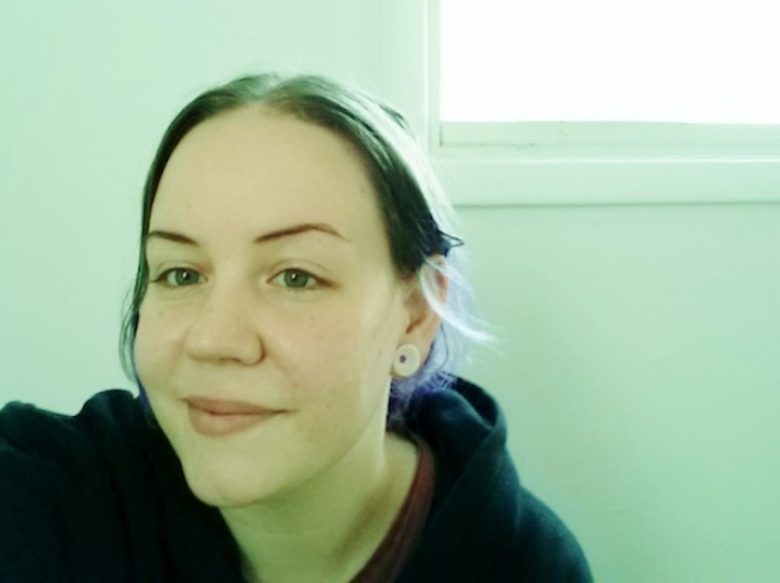
Nominated by Northern Illinois University I draw on geology and geography for their organic and amorphous abstract possibilities. I focus on land forms and loosely on architecture because I’m heavily influenced by the exterior and interior spaces I pass through. Landscape always seems to amplify the viewer’s state of mind, and interior space seems to reflect it back. I’m interested in the relationship between interior and exterior space, by extension public and private space. More than anything my work is about a tactile love of form and material and a constantly shifting fixation with color. Image: Paper Mountain, 2014.
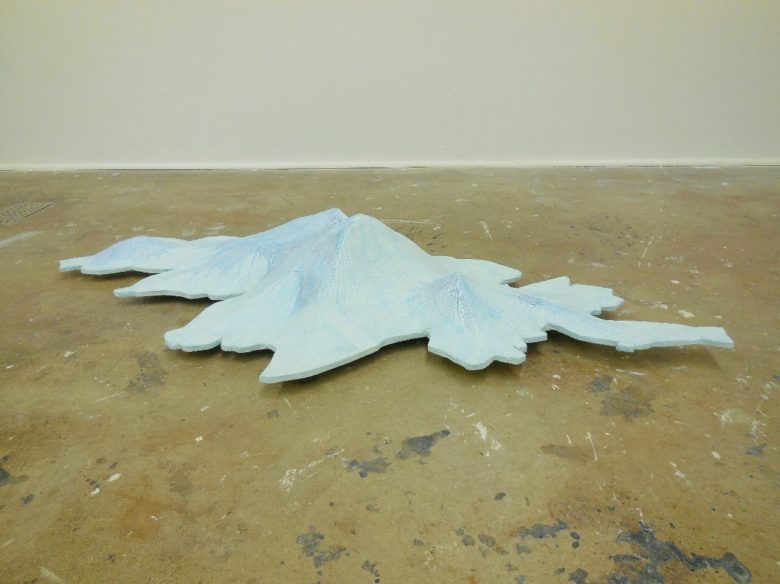
Nominated by SAIC A single brick lying abandoned on the side of the road or in a field is capable of very little on its own. It is a single and modular unit, but take that brick and replicate it 1,000 times and now it has unlimited potential to be apart of something larger than itself. Driven by the un-monumental and insignificant, my work strives to instill notions of time, weight, and what it means to exist through material and process. Time and memory always play a key role, and by taking everyday life as subject matter I am able to address the core values and concerns which humanize us. Working primarily in clay allows me to delegate the way in which time is visually perceived through its ability to either crumble and dissolve or alternatively vitrify and remain frozen in time. The conversation created between a moment and an object questions one another—does the object define the moment or does the moment define the object? My work often tries to find a balance between the two through the utilization of simple forms and playful gestures in composition and material choice, as a way of addressing otherwise heavy subject material. Additionally, my work often revolves around the seemingly inappreciable facets of identity, construction of the “domestic,” and the everyday. The simplicities and complexities of these themes are portrayed by working with repetitive processes or recurring forms, by way of creating a conversation between the mundanity of a singular unit with the nexus of multiple units combined. The never ending struggle of navigating through these issues becomes evident through a methodical process that produces discrepancies through uniformity. Image: Untitled: A Collaboration with Richard Serra, 2014.

Nominated by Columbia College I interpret the world through sculpture, installation, video, and photography in any combination that is necessary. With these as tools, I dissect language, culture, media, and the various environments I find myself in. Image: Allot (Performance), 2014.
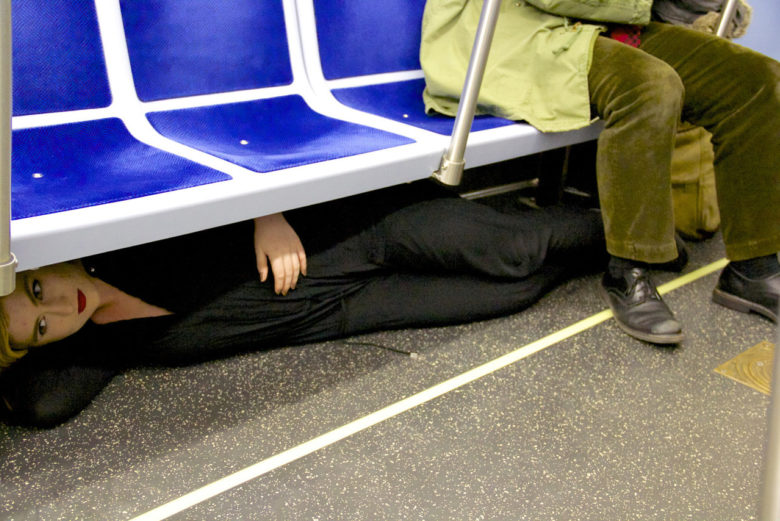
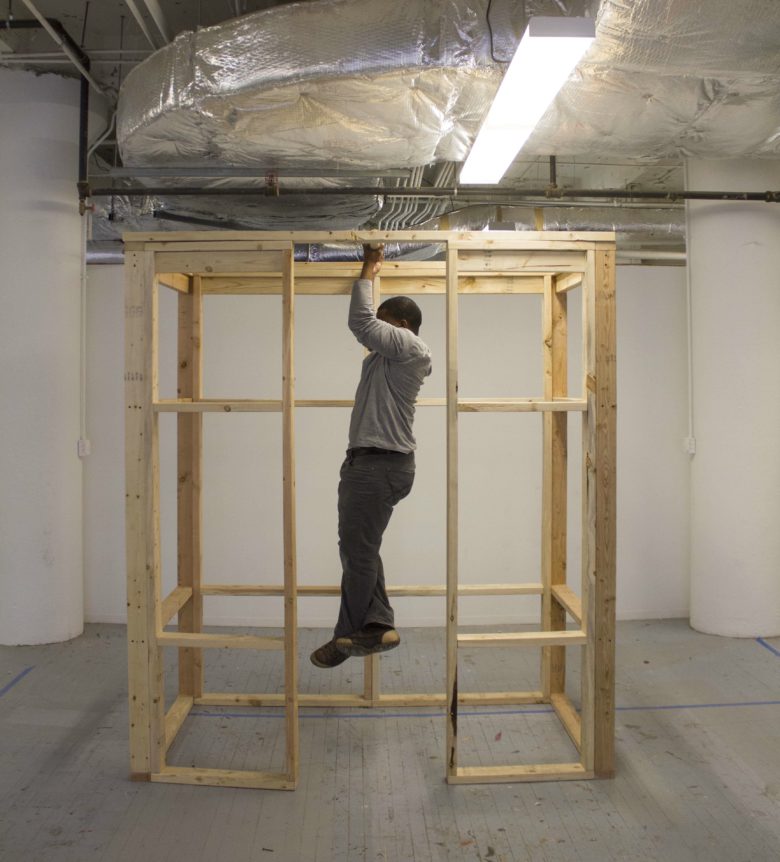
Nominated by UIC The Path to the Supplement for the Perceived Deficiency I am invested in learning how “to be.” I investigate the subtle, important and/or common details that are hidden in plain sight in the environments that surround us. Employing different processes to highlight these things in order to affect how we see beauty. My source material is in surplus. I use industrial building materials such as wood and brick because of their commonality. These materials are apart of our everyday environment and are easily recognizable. As conditioned consumers, our definition of beauty is too often dictated by the object’s exclusivity. By using common materials I hope to slow us down a bit, giving us space to reimagine, decontextualize and appreciate things that are all around us. Many of the pieces that I construct, scenes, objects etc. aim to create continuity between environments that may regularly contrast, in order to better connect audiences to each other. My work intends to complicate their interactions by creating a sort of translation. I look to learn what sensitivity is in different environments, in order to facilitate in the communication of that sensitivity to a different audience. If certain intricacies of a particular environment can be communicated to another, it allows for a greater connection to be realized and/or created. Investigating the relationship between activity and identity has led me to physically involve myself in different environments, performing different tasks. My kinetic involvement enhances my ability to identify and/or communicate the meaning behind the movement. I look to understand the exchanges that happen within work environments and how they produce more than objects and resource. Image: Just Be, 2014.
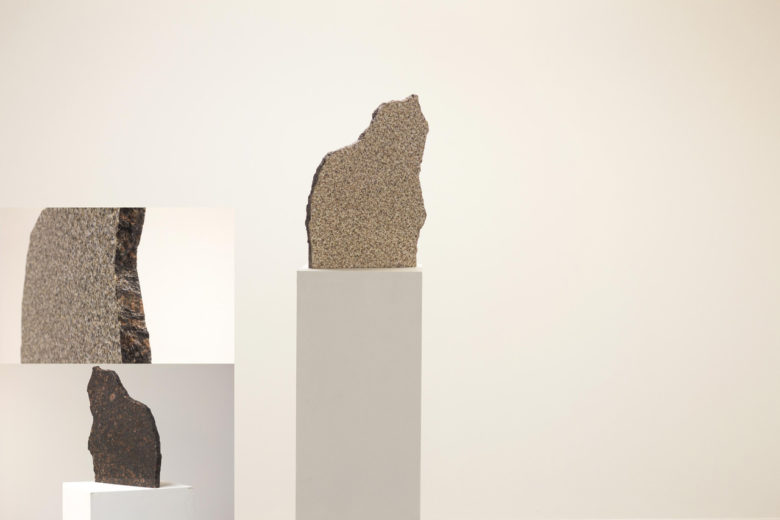
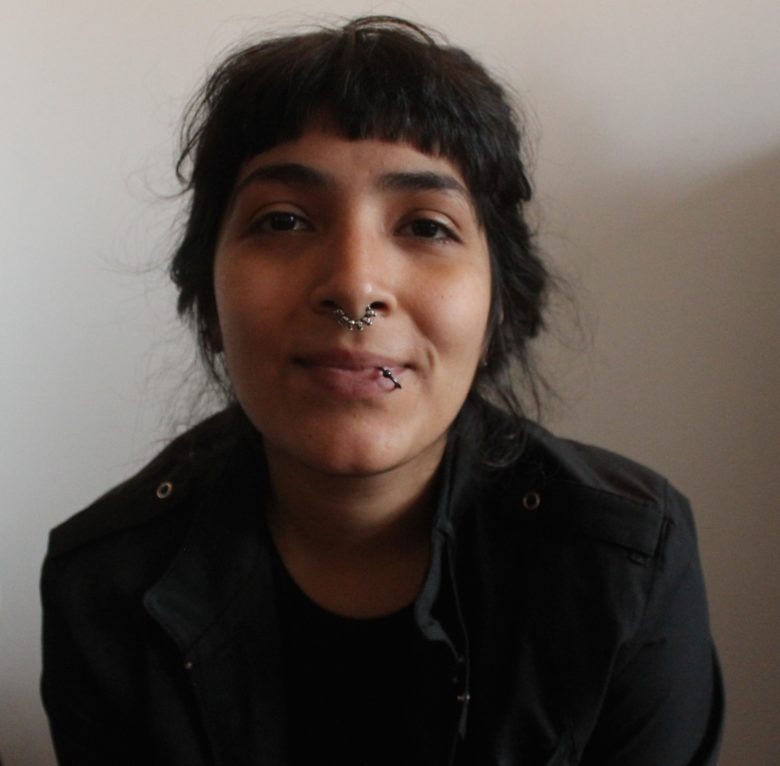
Nominated by Harold Washington College I create art by using various methods and mediums such as digital processing, printmaking, and ink drawings. I am continuously learning new ways to make art. My work is made through the combination of the modern and traditional, taking advantage of the various technologies available to support each other and often going back and forth between mediums. Environment and location heavily influence me and the content of my art is very much reflective of my surroundings. I take the objects of my inspiration and in order to highlight them, I recreate them in a realistic yet stylized manner. I want to give them my interpretation while leaving them distinguishable and recognizable. My artwork is meant to bring attention to these subjects in order to share my fascinations. Image: Frilled Lizards.
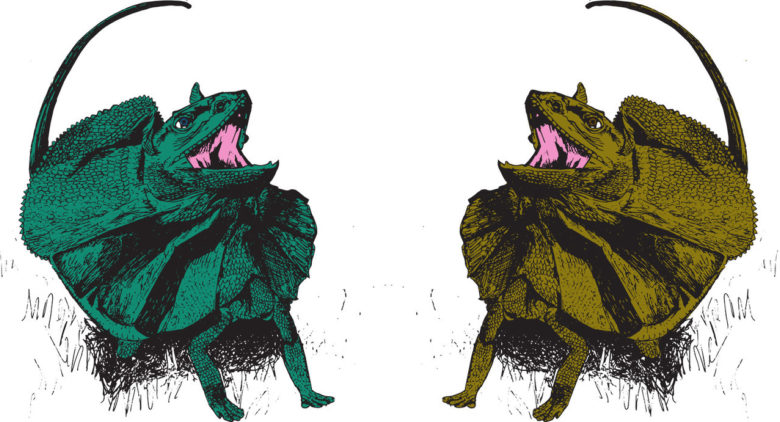
Nominated by Northern Illinois University. My art deals with things ‘off limits’ to me--I've been harboring the feelings of a child repressed. I am the culmination of years of hard work, of tears and blood, of fights and deafening silences. My work is about what happens when things restricted come lose, intersect: what happens when I’m not just a person, but multiple? When woman becomes not just woman, but black, queer, disabled woman. I explore the idea of inhabitance, of exploring a body and an existence that both is and isn't mine. To the world, I and other black women exist as objects. So through objects, through things I find slices of personal, private feelings, not the kind to be made public but to be kept for myself, cherished. I find pieces of myself. Image: Hanna, 2015.
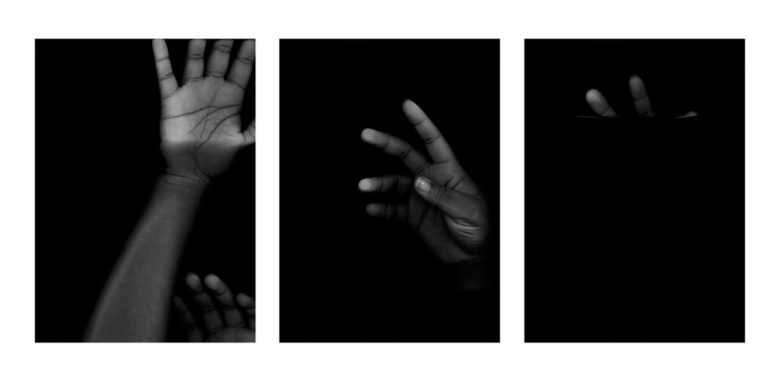
Meet Guest Speakers
Allyson Esposito has served as the Director of the Cultural Grants Program for DCASE since October 2012. Prior to her work with DCASE, Allyson served as the Program Officer for the Mayer & Morris Kaplan Family Foundation in Highland Park, IL. She came to philanthropy from the for-profit sector, where she worked as an attorney and an information technology/risk management consultant with Deloitte & Touche. Allyson has also been a practicing dance artist in Chicago for more than 10 years. She has been creating and performing dance with The Space/Movement Project since its inception in 2005 and led the company as its executive director from 2007-2012.
Andi Crist was raised in Birmingham, Alabama and earned her BFA from Columbia College Chicago in 2011. She is the co-founder and executive director of Autotelic Studios, a nonprofit arts organization that serves the creative community on the northwest side of Chicago by creating affordable studios in alternative spaces. Crist’s practice focuses on sculpture–both social and object-based–which touch on subjects of appropriation, practicality, place-making, and the assessment of value. She has recently exhibited work at Mana Contemporary, the Washington Park Arts Incubator and Chicago Artists Coalition. About Autotelic Studios Autotelic is committed to providing affordable workspace and facilities to artists interested in creating within a supportive, community-centric environment. Our studios offer inexpensive individual studios to artists-in-residence, access to shop facilities and equipment, teaching and learning initiatives, and experimental exhibition opportunities and special projects. Through partnerships, collaborative projects and apprenticeships, Autotelic strives to act as an advocate and resource for artists that thrive within a tight-knit community of visual artists. autotelicstudios.org
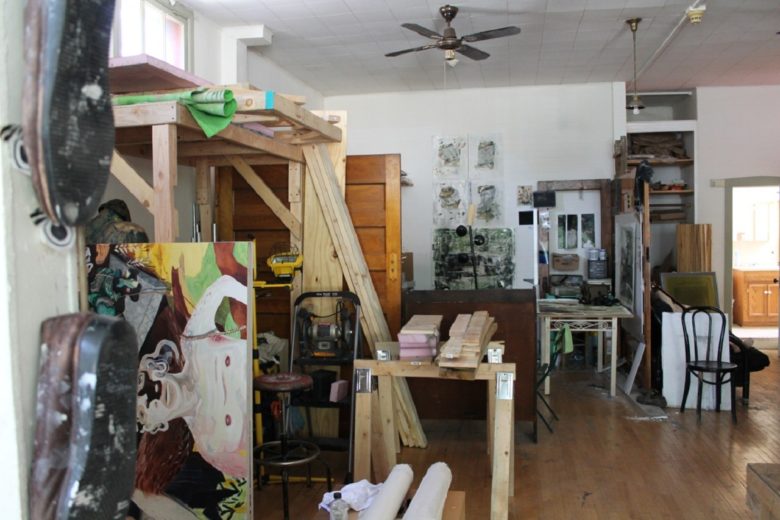
Aron Gent (Born 1985) is an artist, gallerist and professional print maker residing in Chicago, IL. He received a degree from Columbia College Chicago and has been a lecturer and educator at the Art Institute of Chicago, Milwaukee institute of Art and Design, the Hyde Park Art Center and Columbia College Chicago. Gent is a co-director of Paris London Hong Kong, Director/Founder of the printing/exhibition space DOCUMENT and a board member for the ACRE Residency. Gent’s work is in the collection of the Milwaukee Art Museum and has been exhibited at the Hyde Park Art Center, Addison Gallery of American Art, Weatherspoon Art Museum, Chicago Cultural Center, Institute of Contemporary Arts Singapore and the Kohler Arts Center.
Benjamin Chaffee (b. 1977, New York, NY) lives and works in Chicago. He received his MFA in 2011 from the School of the Art Institute of Chicago. He is the Director at Corbett vs. Dempsey, Chicago.
Cara Megan Lewis is an artist, curator and creative consultant based in Chicago. Having cut her teeth at Fraenkel Gallery in San Francisco in 2002, Lewis has worked in the realm of commercial galleries for over 10 years. Lewis currently holds the position of Associate Director at Rhona Hoffman Gallery. Upon receiving her Master's degree in Curatorial Practice from the California College of the Arts in 2007, Lewis co-founded the Kansas City art gallery, Cara y Cabezas Contemporary. During the gallery's 4 years of operation, Lewis organized solo exhibitions for international artists, developed group exhibitions that explored socio-political themes, and fostered a residency program that hosted artists from Central America and the Caribbean. As a creative consultant she has assisted artists to design and realize artist books, consulted arts professionals on both professional development and artist/gallery relationships, and acted as a design liaison. As an artist, Lewis collaborates with Alejandro Figueredo Diaz-Perera under the name Diaz Lewis. Their collaborative practice in performance, video installation, and photography investigates how the changing political relationship between their two home countries (US and Cuba) manifests on a micro level. Informed by political rhetoric, immigration and property rights, Diaz Lewis dissect relevant themes from two very distinct and often opposing perspectives.
Claire Demos is a visual artist and freelance photographer based in Chicago, IL. In additional to her photography, she works as a law clerk and recently became a member of The Chicago Perch as the Director of Finance and Administration. Claire received her BFA with a concentration in photography from the School of the Art Institute of Chicago and will be starting law school this Fall.
Danny Orendorff is a curator, writer, teacher, and activist currently working as Programming Associate for Threewalls, a non-profit gallery in Chicago, IL. Orendorff was previously Curator-in-Residence & Interim Director of Artistic Programs for The Charlotte Street Foundation in Kansas City, MO, where he also taught at the Kansas City Art Institute. Previously the Assistant Director of The Renegade Craft Fairs, his independent curatorial projects focusing on themes of queerness, feminism, non-normativity and DIY or craft-oriented art production have been hosted by The Center for Craft, Creativity & Design (Asheville, NC), Glass Curtain Gallery (Chicago, IL), and SF Camerawork (San Francisco, CA), among others. Orendorff has had essays published by the Chicago Cultural Center, H&R Block Artspace at the Kansas City Art Institute, Grand Arts, and the Daum Museum of Contemporary Art, and his writing has been featured on Art21, Art Practical, Art in America Online, and Bad at Sports.
Lifelong Chicagoan/artist and Prince "fam" Felicia Holman is an independent cultural producer/programmer and facilitator, as well as a co-founder of Honey Pot Performance. As both artist and producer, Felicia presents and supports innovative interdisciplinary art that engages audience and inspires community. Recent projects include:
- Serving as City Bureau Public Newsroom Series Curator (Fall 2019).
- Featured artist / facilitator at Flux Factory's "Must They Also Be Gods" group exhibition (Fall 2019; NYC).
- Awarded 2020 Ragdale Foundation artist residency (Summer 2020).
- Facilitating career development programming for emerging artists (Ongoing).
Felicia relishes her dynamic artrepreneurial life and sums it up in 3 words: 'Creator, Connector, Conduit'.
J. Gibran Villalobos is an administrator, curator, and art historian who is an alum of CAC’s HATCH residency. In 2016 he was elected to attend the Advocacy Leadership Institute where he was invited to the White House Office of Public Engagement, the National Endowment for the Arts, and the Congressional Hispanic Caucus to speak to key issues affecting Latinos in Chicago. He served as the 2017 resident curator at the Chicago Cultural Center where he launched an inaugural summit of Latino artists and administrators across the United States. For this project, he received the Act Up Awards from the Chicago Community Trust, and a Propeller Grant. He has held the posts of Cultural Liaison for the Chicago Park District in the department of Culture, Arts, and Nature, and Public Programs and Partnerships Manager for the Chicago Architecture Biennial. He currently serves on the Auxiliary Board for the National Museum of Mexican Art and on the Board of Directors for the Chicago Artists Coalition. In 2019 he was recipient of the “Leaders of Color Fellow” by Americans for the Arts and was also named by the Field Foundation as recipient of the “Leaders for a New Chicago” award. He is currently serving as the co-Chair to the National Association of Latino Arts and Culture nationwide summit for 2020 in which more than 200 Latino artists and administrators will meet and gather in Chicago. He is faculty lecturer at the School of the Art Institute of Chicago in the Department of Arts Administration & Policy and currently works as Assistant Curator in Performance and Public Programs at the Museum of Contemporary Art Chicago.
(updated 2025)
James Pepper Kelly is a writer, maker, and arts administrator with a background in English and Studio Art from Wesleyan University. He serves as Executive Director of LATITUDE and Managing Director of Filter Photo. His writing has been featured by ArtSlant, Bad at Sports, and Chicago Artist Writers, where he has also served as a guest editor. In 2014 he received ArtSlant’s Staff Residency in Paris, and he was commissioned by the Hyde Park Art Center to write the catalog essay for the organization’s biennial Ground Floor exhibition. He currently sits on the Hyde Park Art Center’s Exhibition Committee.
Jessica Pierotti is an interdisciplinary artist, photographer, and educator with an MFA from the University of Illinois at Chicago and a BFA from the Rochester Institute of Technology. Jessica joined LATITUDE as Deputy Director in May 2016 and transitioned into the position of Executive Director in January 2017. She additionally works as an Instructor in the Photography Department at the School of the Art Institute of Chicago and the University of Illinois at Chicago.
Julie Herwitt CPA has over 25 years of experience working with small businesses and individuals. Additionally, Julie has a BFA from The School of the Art Institute of Chicago and exhibits her paintings throughout the US. This dual personality is what allows Julie to bring a unique perspective to the tax and accounting needs of artists, writers, musicians and other creative individuals. She is a frequent guest lecturer at The School of the Art Institute of Chicago and Columbia College. Additionally, she has given workshops through the Chicago Department of Cultural Affairs, the Chicago Artists’ Coalition, The Music Industry Workshop and other Midwest arts organizations. As a result of Julie’s experience with both accounting and the arts, her accounting practice works with numerous artists, writers and musicians.
Kate Bowen is an artist, curator, and teacher living and working in Chicago. She is the Acting Executive Director at ACRE (Artists' Cooperative Residency & Exhibitions) and the Video Programming Coordinator at the Museum of Contemporary Photography. She received her MFA in Photography from Columbia College Chicago in 2011.
Kate Dumbleton is an Assistant Professor of Arts Administration and Policy at the School of the Art Institute of Chicago (SAIC), where she also leads the Management Studio in its graduate program. She is also the Executive and Artistic Director of the Hyde Park Jazz Festival. Previously, Dumbleton was the Executive Director of the critically acclaimed Chicago Jazz Ensemble. Her work in jazz, improvised music, and performance spans nearly two decades, including music direction for jazz clubs and festivals; curatorial direction of artist residencies; direction of interdisciplinary projects in music, dance, theater, visual art, and film; venue and record label management; administrative direction; and artist management. She owned and operated a successful performance, exhibition space/wine bar in the Bay Area from 2000-06. Her research interests include improvisation studies, black experimental music, and artist driven production networks. Kate's current affiliations include the Advisory Council for the Chicago Artists Resource and ChicagoMusic.org; Programming Committee Member for Made in Chicago Performance Series in Millennium Park; Board of Directors for the Experimental Sound Studio (ESS); Board of Directors for Rova Arts (SF); Artistic Direction Advisory Council, Yerba Buena Garden Festival (SF); Leadership Team for Red Poppy Art House (SF). She has served on numerous local and national grant and prize panel committees. Dumbleton has a B.A. (Cum Laude) in History from Hamilton College, New York and an M.A. in Arts Administration and Policy from the School of the Art Institute of Chicago.
Kate Schutta is an artist, educator, and Director of Career and Professional Experience (CAPX) at the School of the Art Institute of Chicago. Kate Schutta advises students and alumni/ae on professional and job search strategies and coordinates Career and Professional Experience (CAPX) activities and resources. Schutta’s past experience includes book cover and poster illustration and teaching at SAIC and the Royal College of Art. Exhibitions include: National Museum of Art, Wroclaw; Royal College of Art (RCA); and the School of the Art Institute of Chicago. Grants and Fellowships: Chicago Artists Assistance Program grants; RCA Research Fellowship in Communication Design; and Peoples' Republic of Poland Art & Culture Grant. Education: MFA (1989), BFA (1985), School of the Art Institute of Chicago; BA History of Art (1983), Bryn Mawr College. Kate will be a guest speaker for Artist Case Studies: Business Models on October 16, 2018.
Matt Morris is an artist, writer, and sometimes curator based in Chicago. He has presented artwork in Chicago, IL; Philadelphia, PA; Memphis, TN; Reims, France; Greencastle, IN; Lincoln, NE; Cincinnati, OH; and Baton Rouge, LA. Morris is a transplant from southern Louisiana who holds a BFA from the Art Academy of Cincinnati, and earned an MFA in Art Theory + Practice from Northwestern University, as well as a Certificate in Gender + Sexuality Studies. He is a lecturer at the School of the Art Institute of Chicago who teaches in the Sculpture as well as the Painting and Drawing departments. He is the Art Editor for the Newcity; contributes to Artforum.com, Art Papers, Flash Art, and Sculpture; and his writing has appeared in numerous exhibition catalogues and artist monographs.
Patrice N. Perkins is the founder of Creative Genius Law®, a business and intellectual property law firm and strategic legal partner exclusively for creative entrepreneurs, innovators, and change agents. They are game changers looking to impact the world in creative ways. Patrice’s mission is to encourage clients to tap into the unrealized revenue potential of their intellectual property while using the law to protect and nurture creativity rather than stifling it. She develops legal strategies and provides counsel in the areas of business law, contracts and negotiation, intellectual property (trademarks and copyrights), social media, advertising, and marketing law. She’s been recognized by the American Bar Association as a “Legal Rebel” for being a leading innovator in the legal industry. She’s previously spoken at Chicago Creative Expo, Self Employment in the Arts Conference, Chicago Urban League, Chicago Artists Coalition, Blogging While Brown, Alt Design Summit, BlogHer, Eat Write Retreat, and AVVO Lawyernomics to name a few. She's appeared in popular media and blogs including FORTUNE, NBC, Women 2.0, Design Sponge, Young, Fabulous & Self-Employed, Carol Roth and is a member of the Board of Directors for the Chicago Artists Coalition. Patrice publishes Creative Genius Society, a business and law blog, and is the creator of the Quit Kit, a strategic planning system to help creative entrepreneurs ditch their 9 to 5 for full-time entrepreneurship. You can follow Patrice on Twitter and Instagram @creative_esq. Patrice will be a guest speaker for Know Your Rights: A Legal Toolkit for Creative Producers on March 5, 2019.
Artist-scholar Rashayla Marie Brown manages an “undisciplinary” studio practice through photography, performance, writing, installation, and video. A lifelong nomad who moved 24 times, she began her practice as a poet in London. An Artadia and Franklin Furnace grantee, RMB has presented work internationally at Tate Modern, London; Krabbesholm Højskole, Copenhagen; Turbine Hall, Johannesburg; and in commissions at Bemis Contemporary, Omaha; Museum of Contemporary Art, Chicago; Museum of the African Diaspora, San Francisco; Rhodes College, Memphis; among others. She holds degrees from Northwestern University, the School of the Art Institute of Chicago, and Yale University.
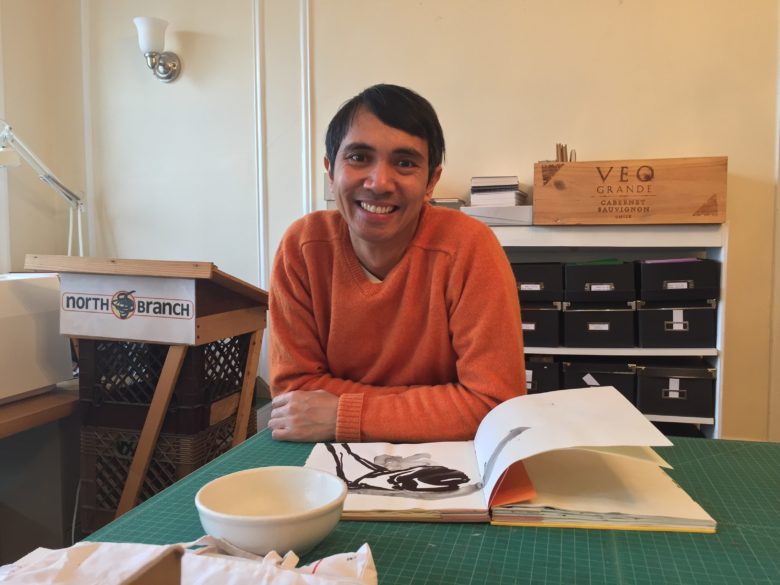
Regin Igloria maintains a studio practice which revolves around teaching and serving as an arts administrator. He teaches studio courses at Marwen, and has also taught at Anderson Ranch Arts Center, Rhode Island School of Design, and various workshops throughout the Chicagoland area. Currently he serves as the Director of Artists-In-Residence at The Ragdale Foundation. In 2010 he founded North Branch Projects, a community bookbinding facility. He received his MFA in Painting from Rhode Island School of Design and has exhibited his work internationally.
